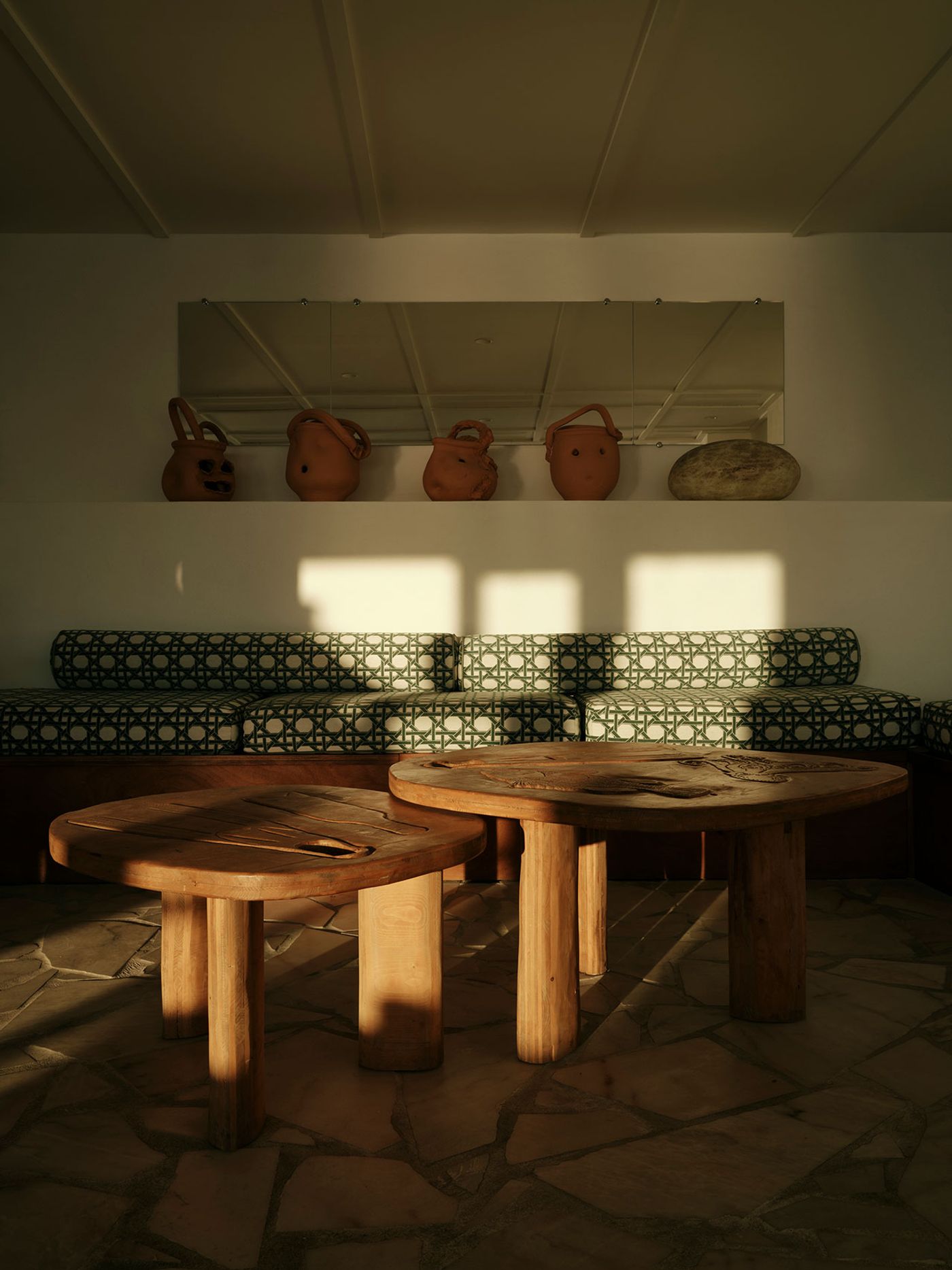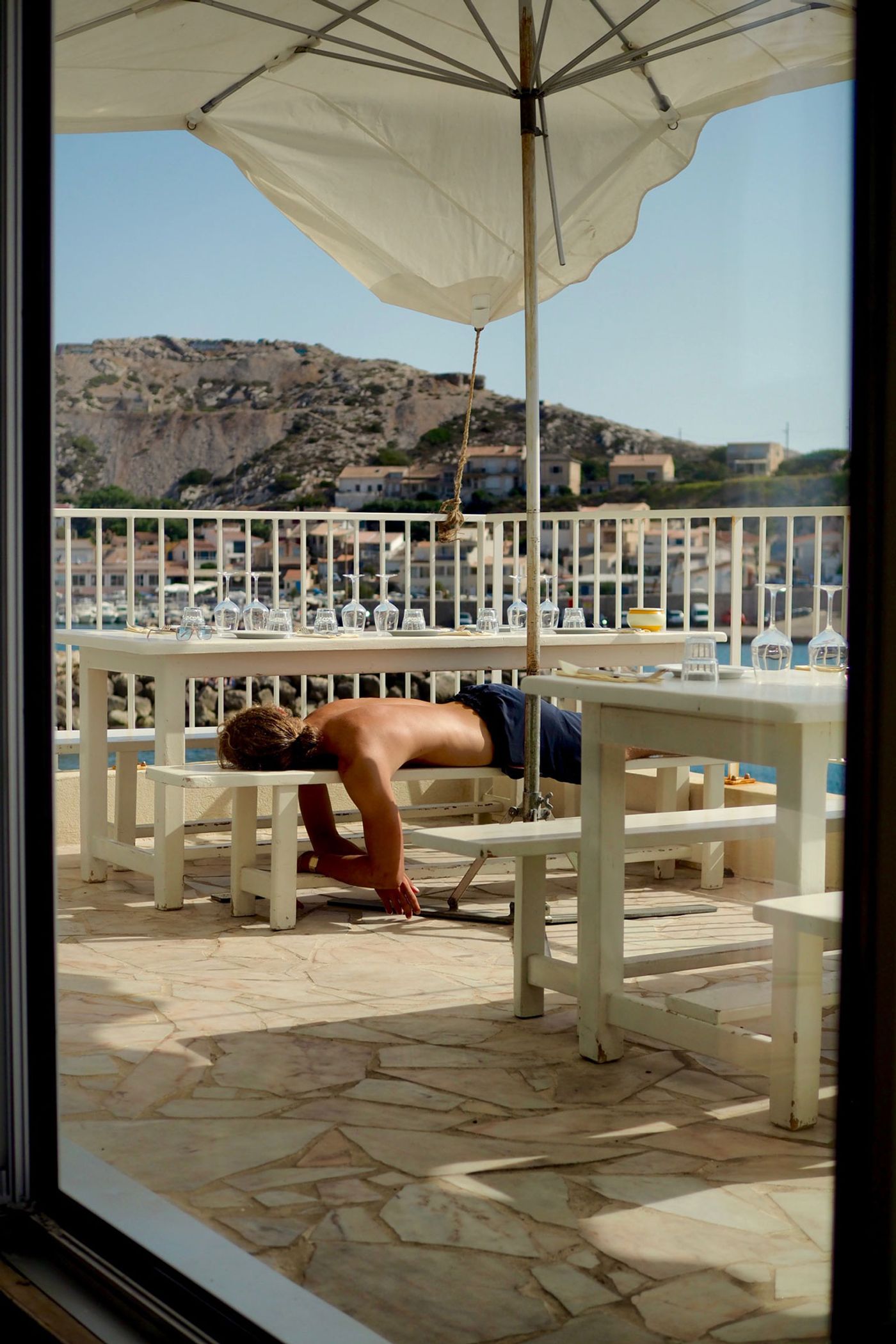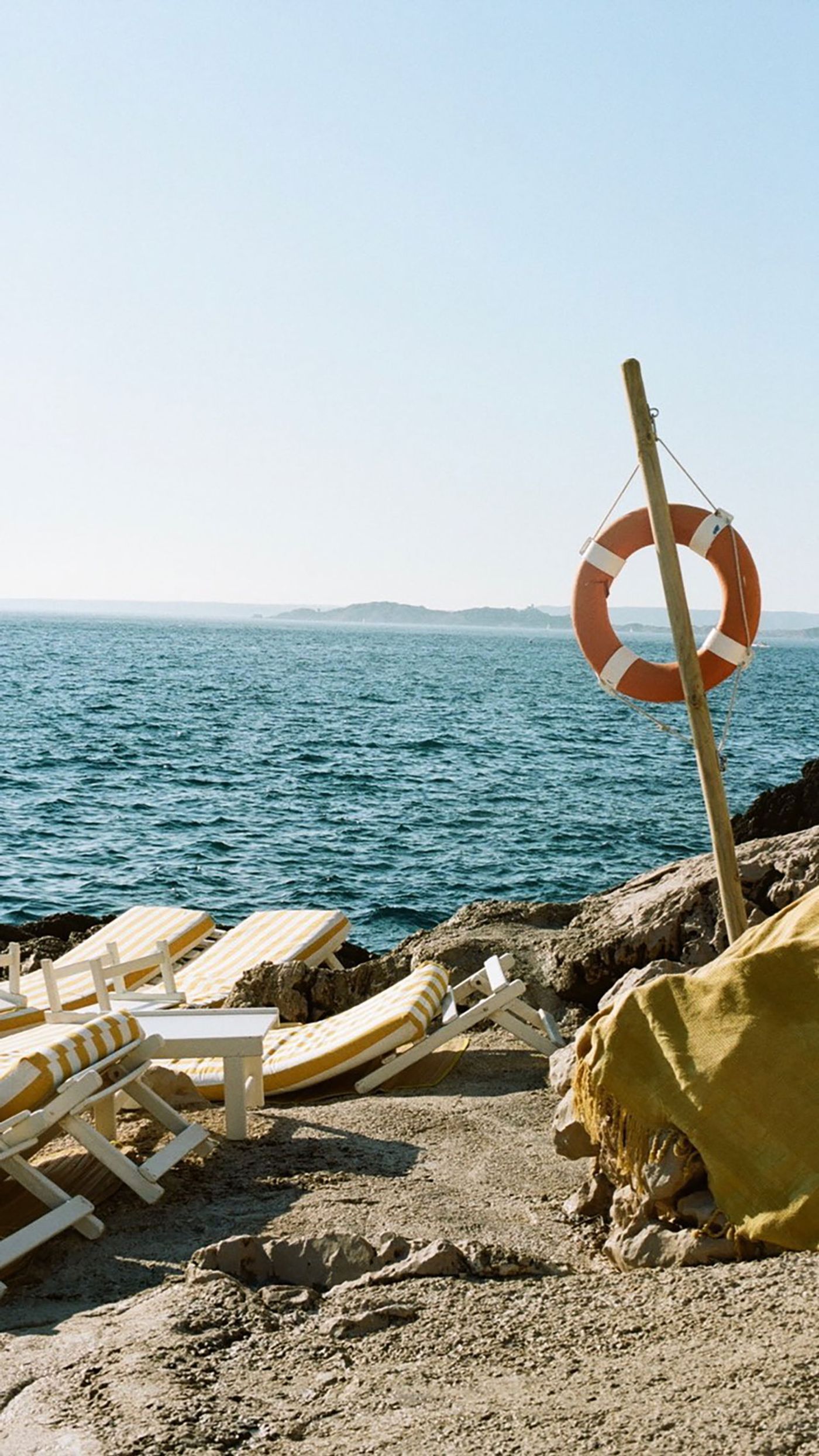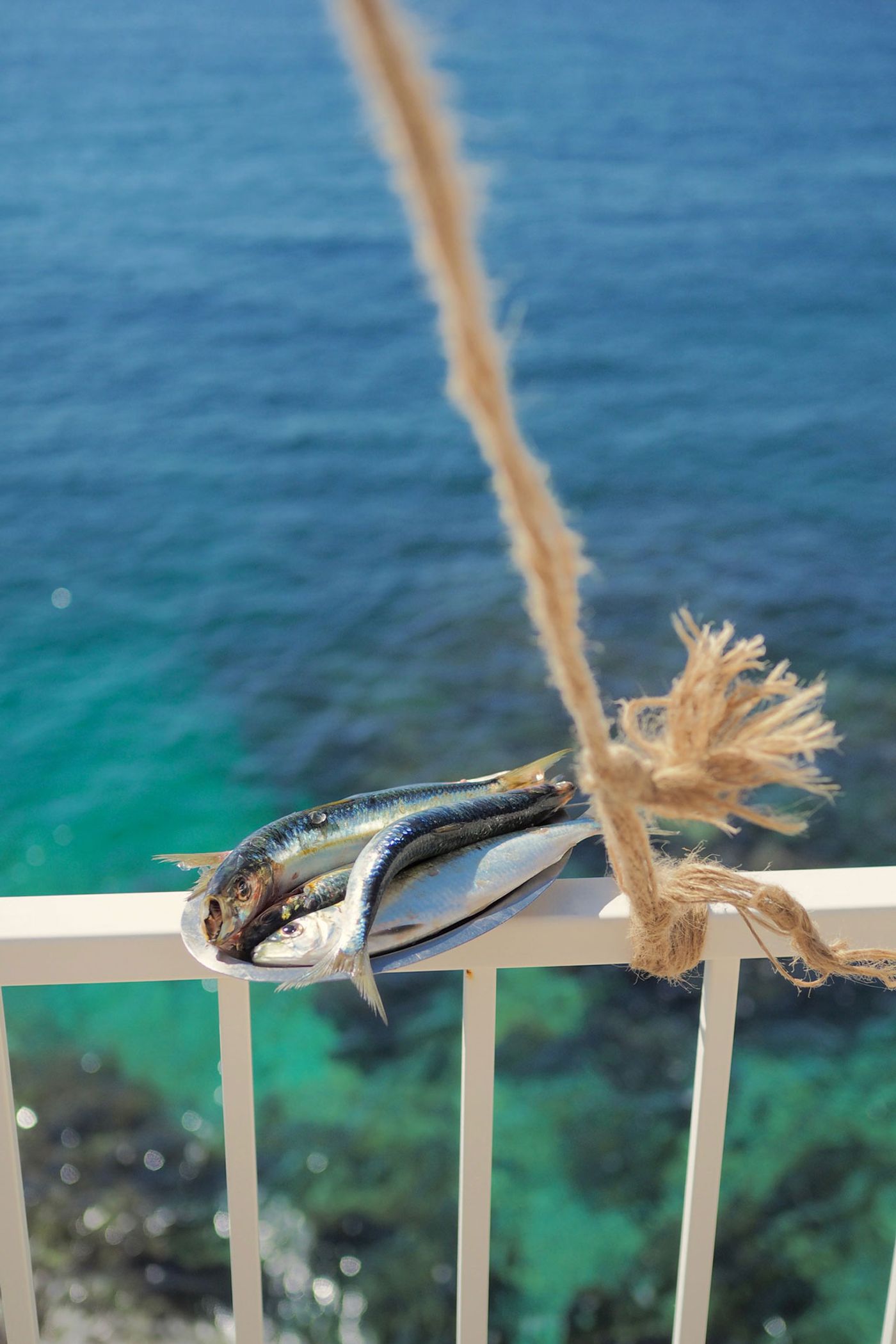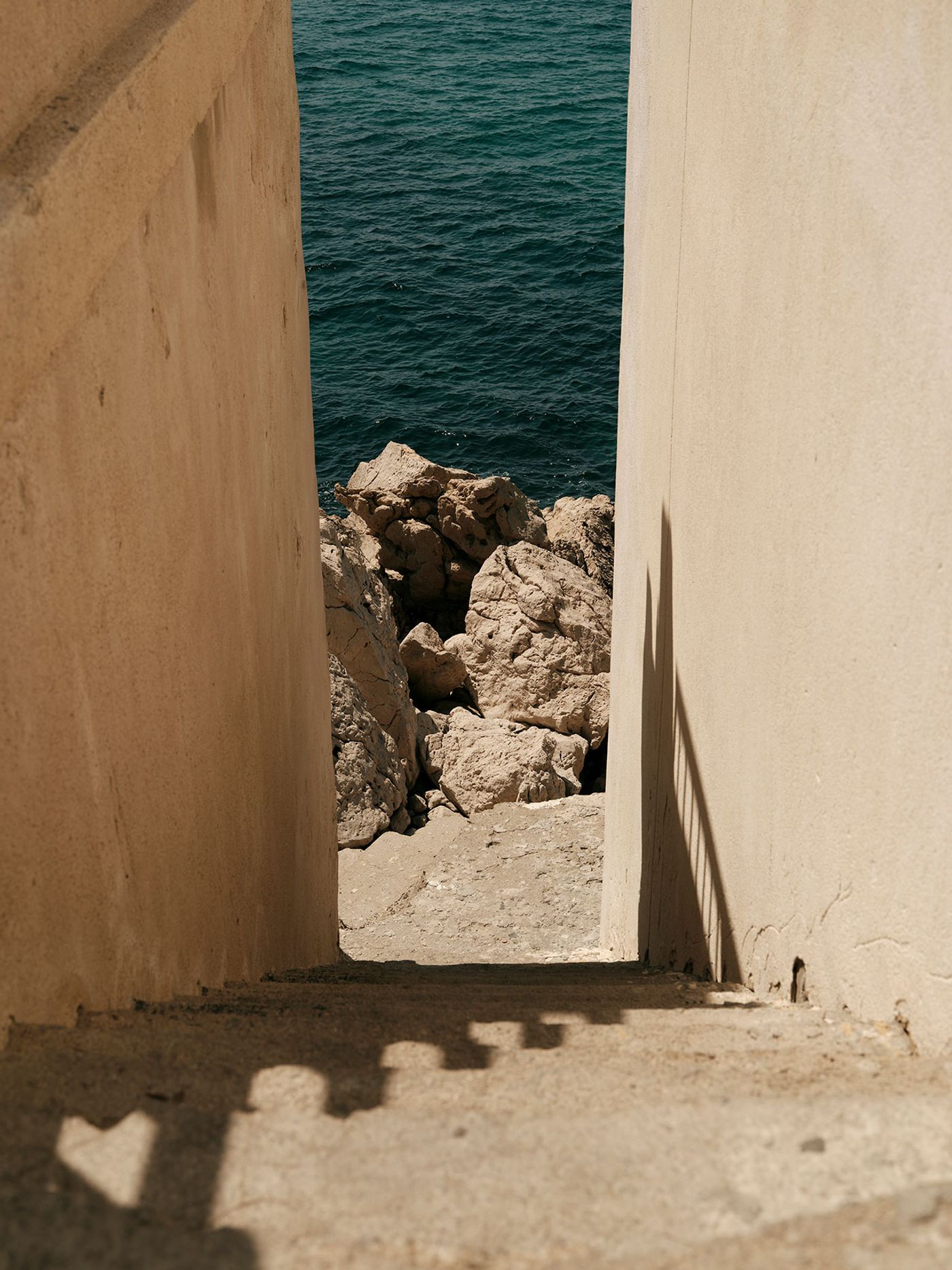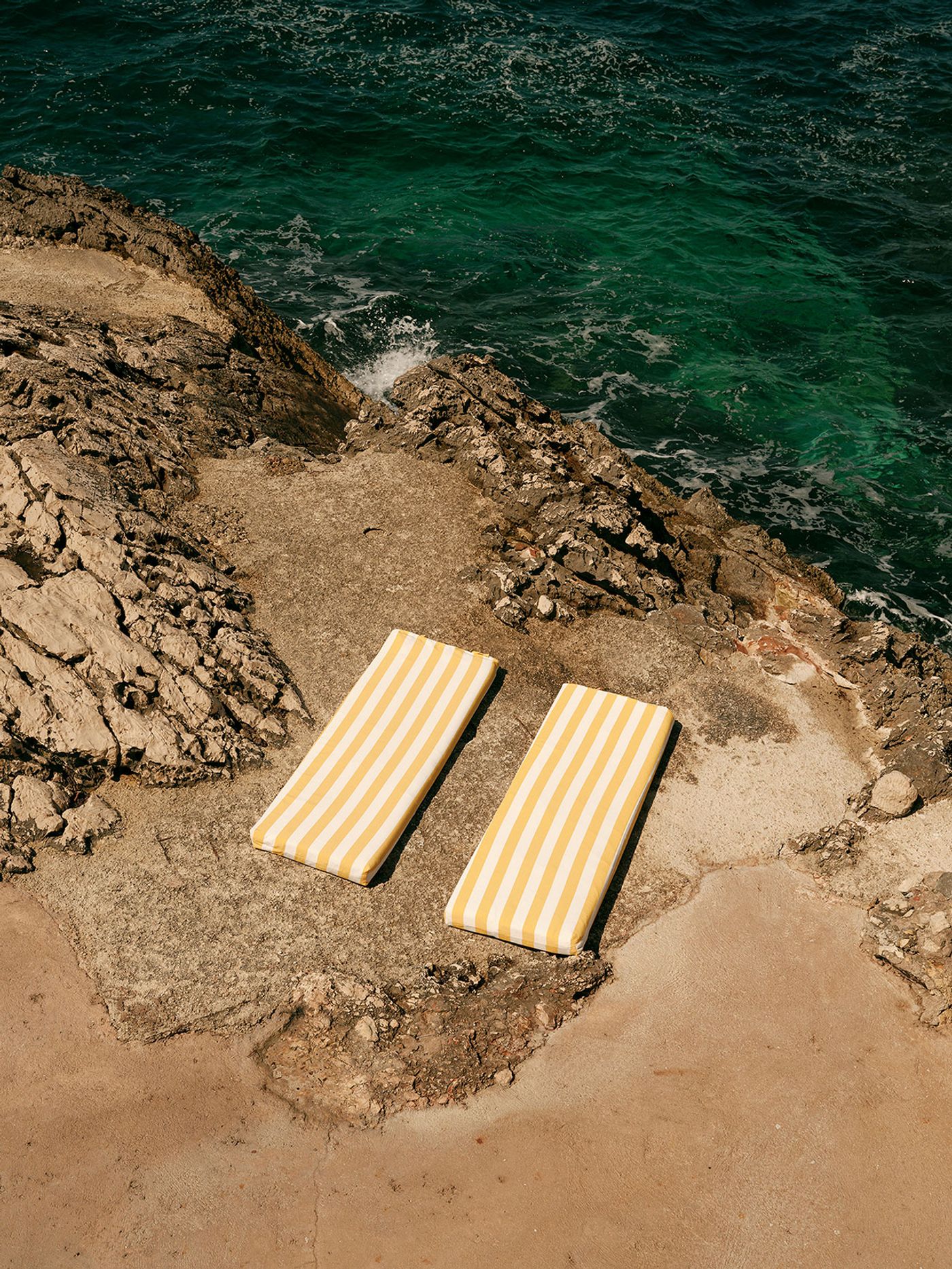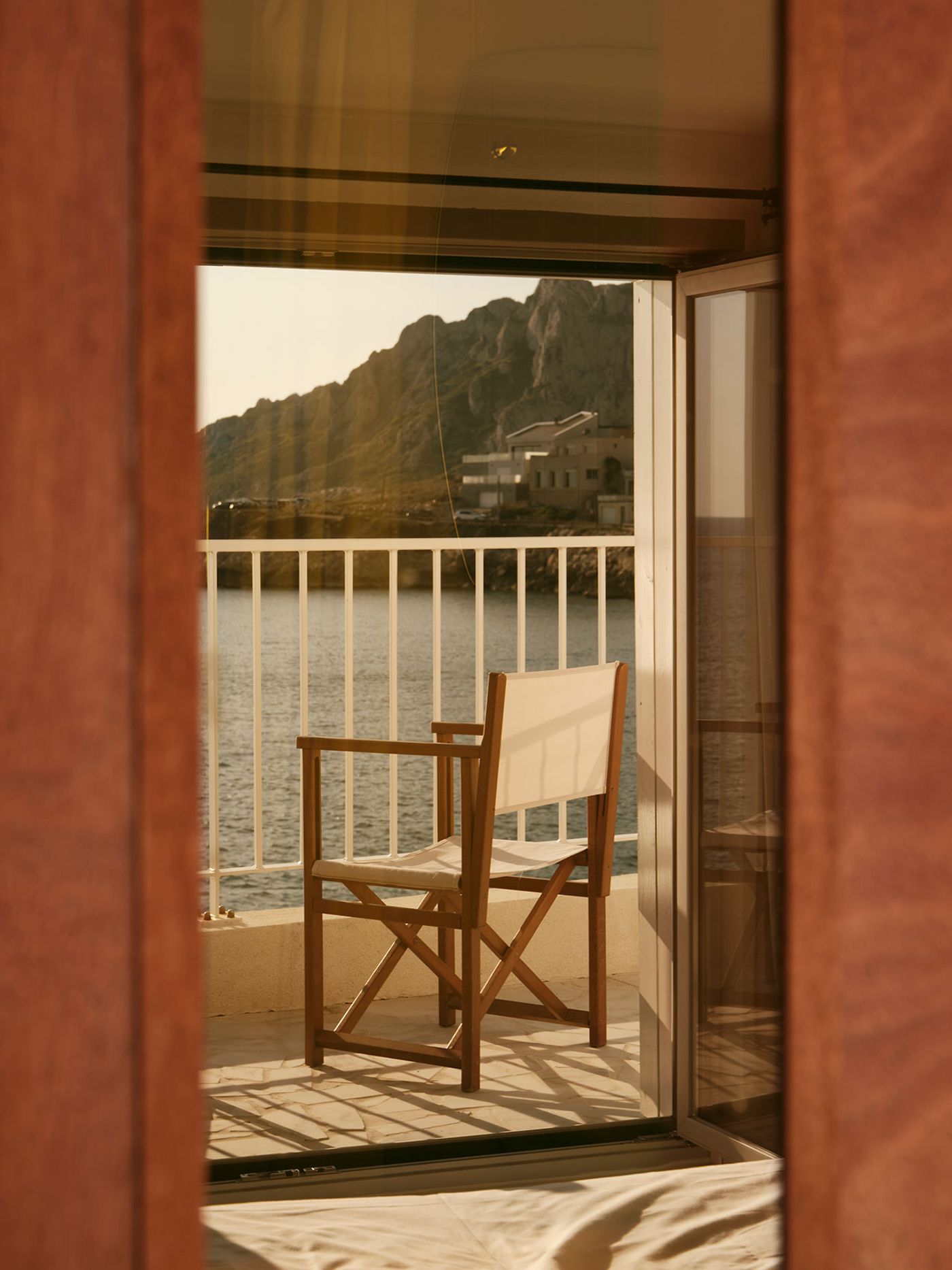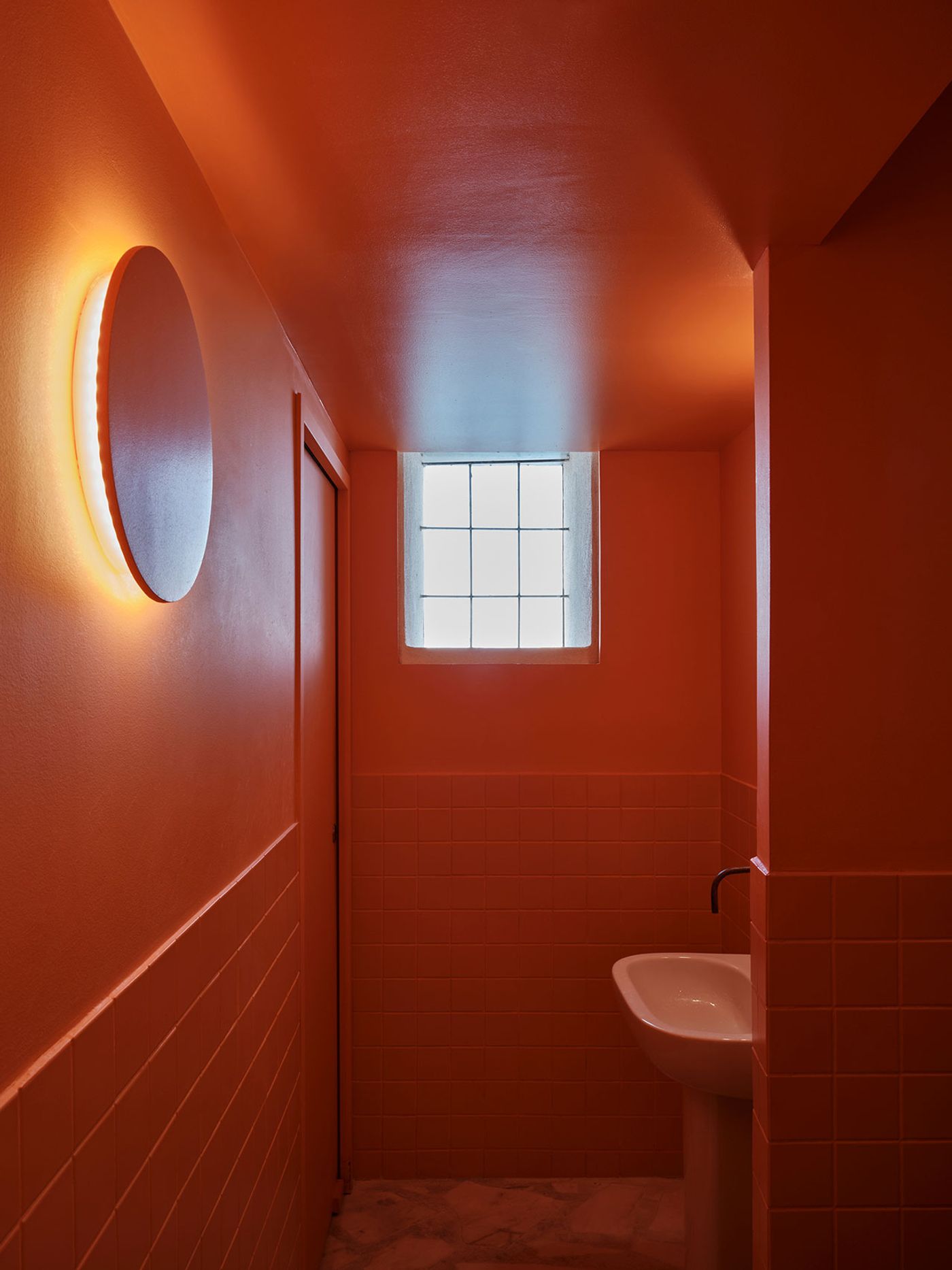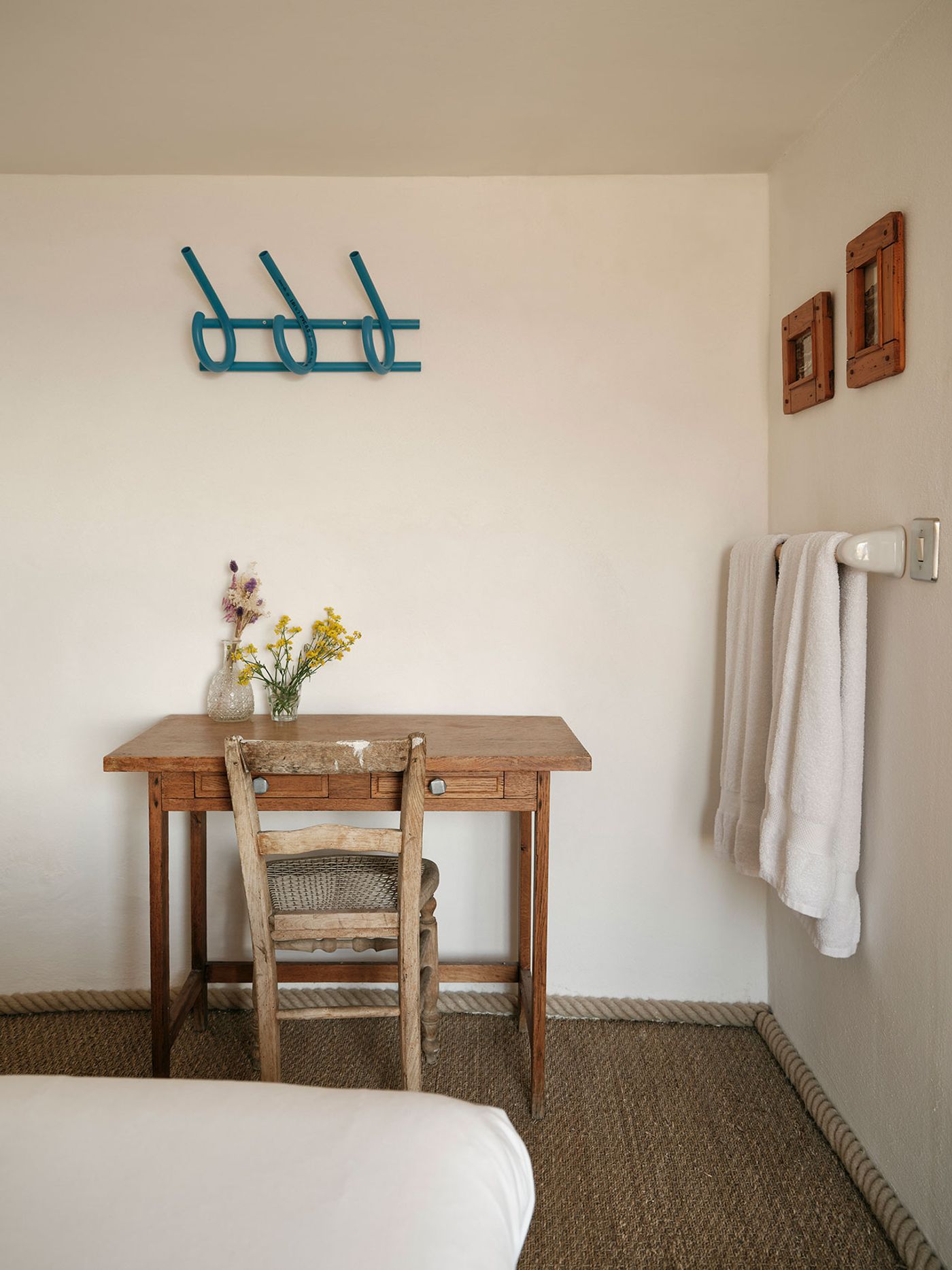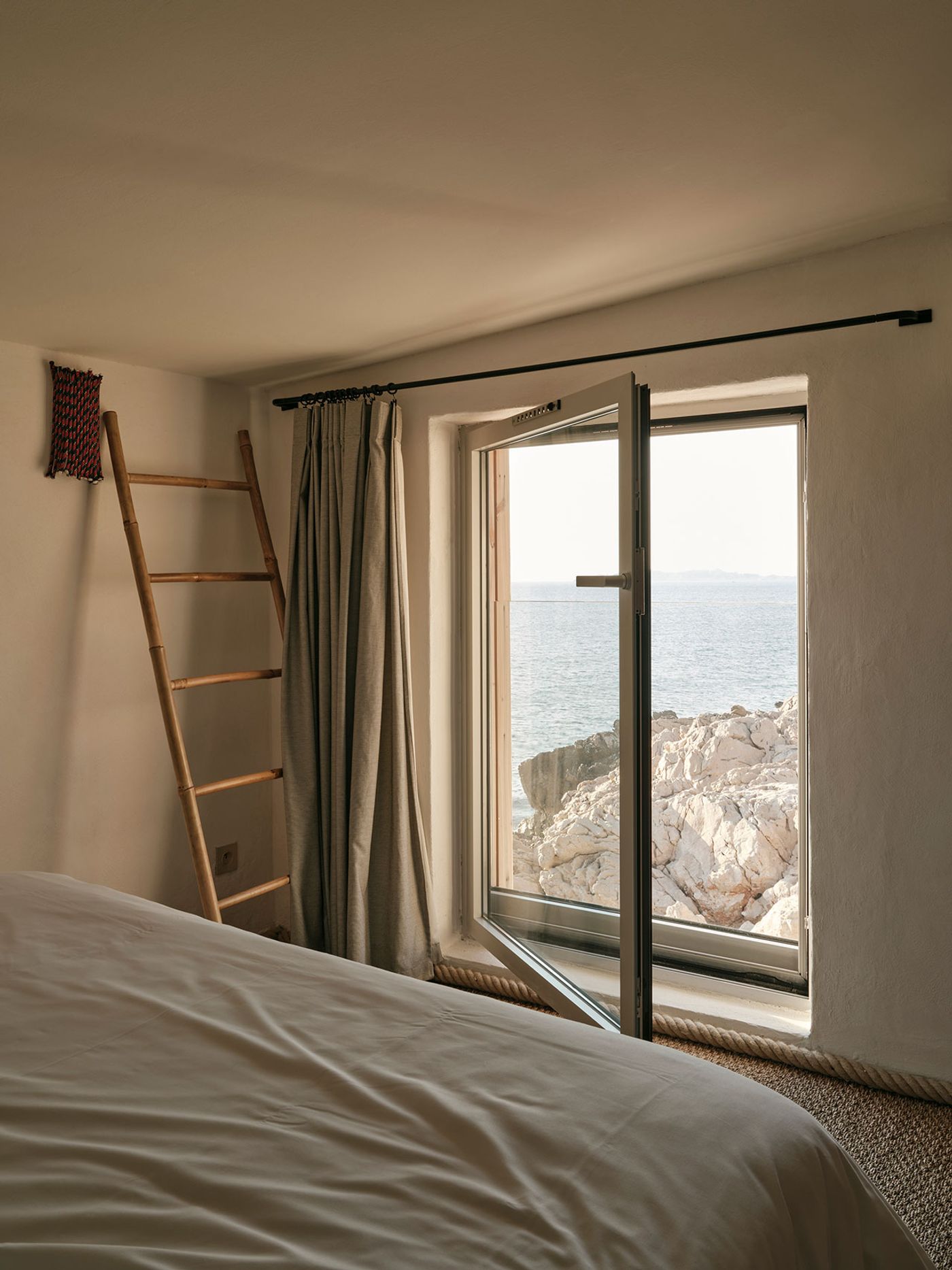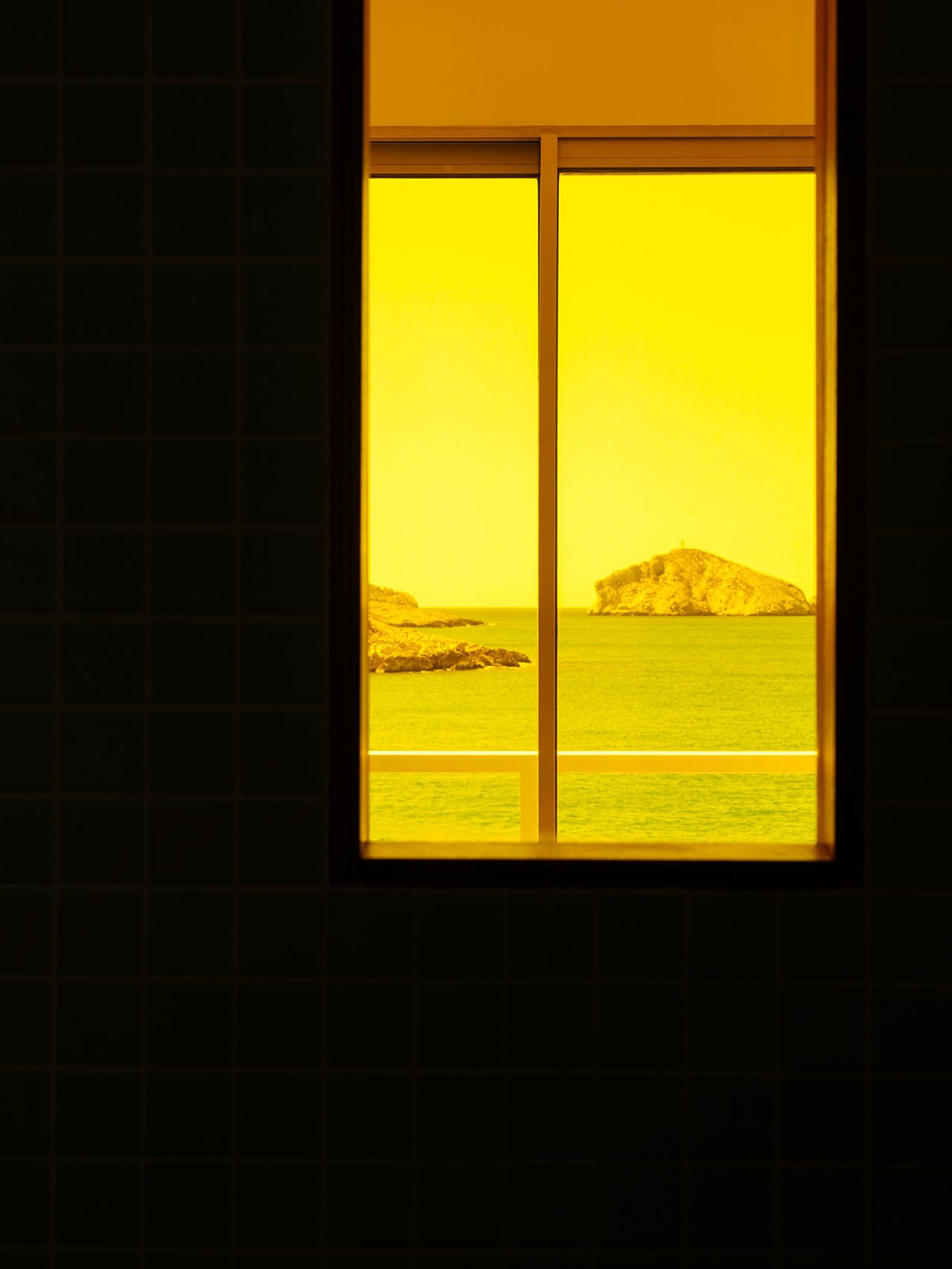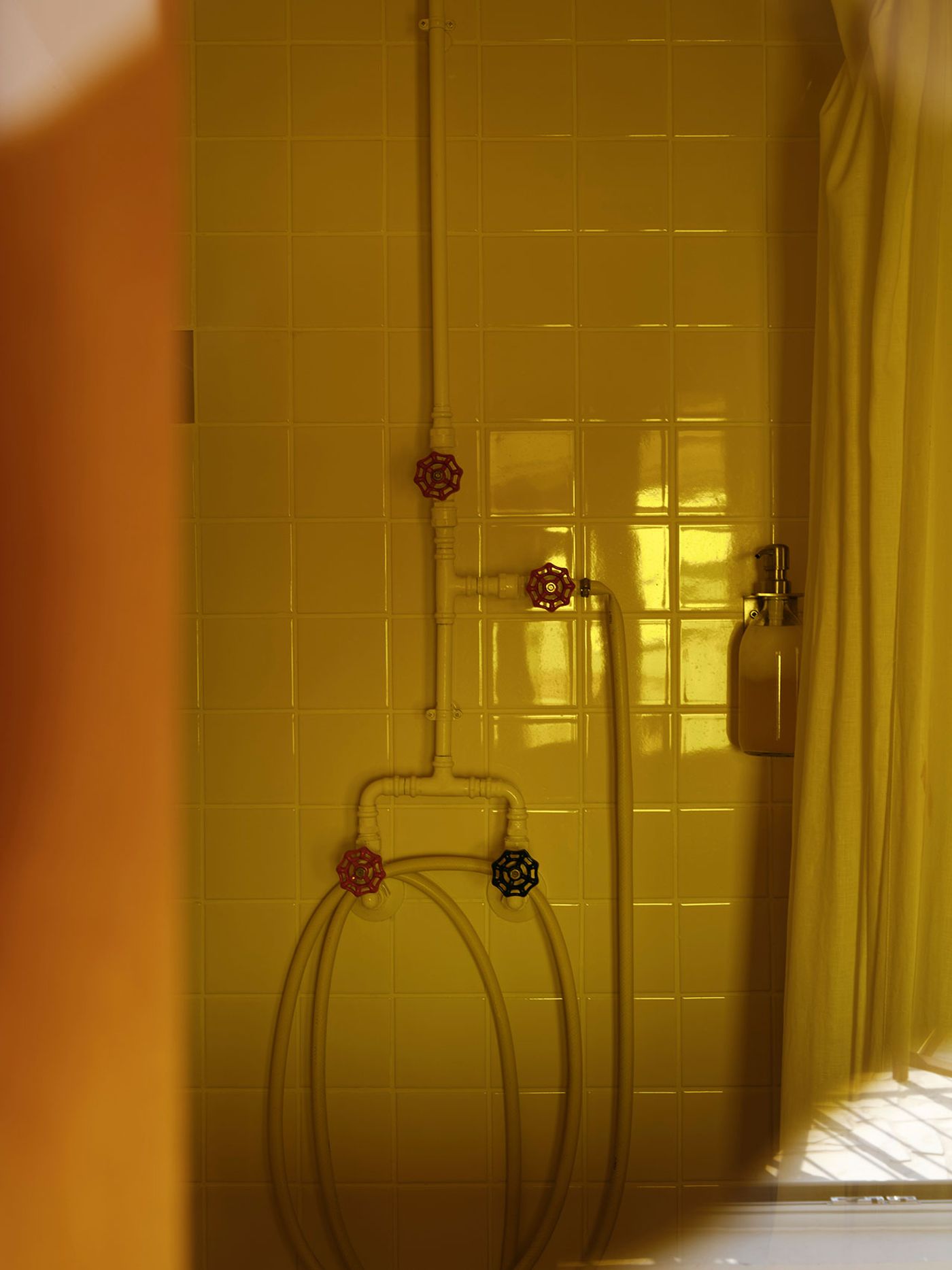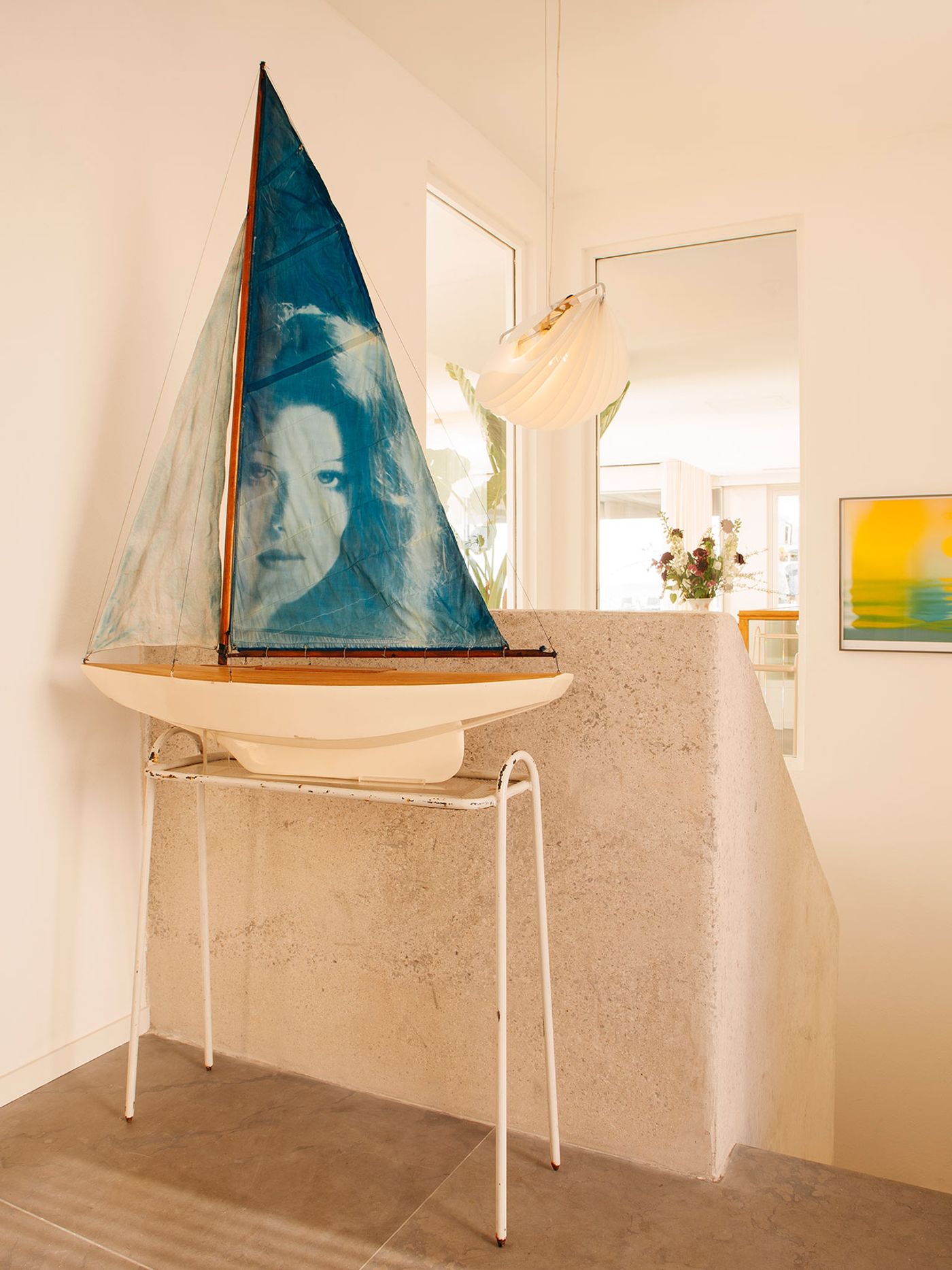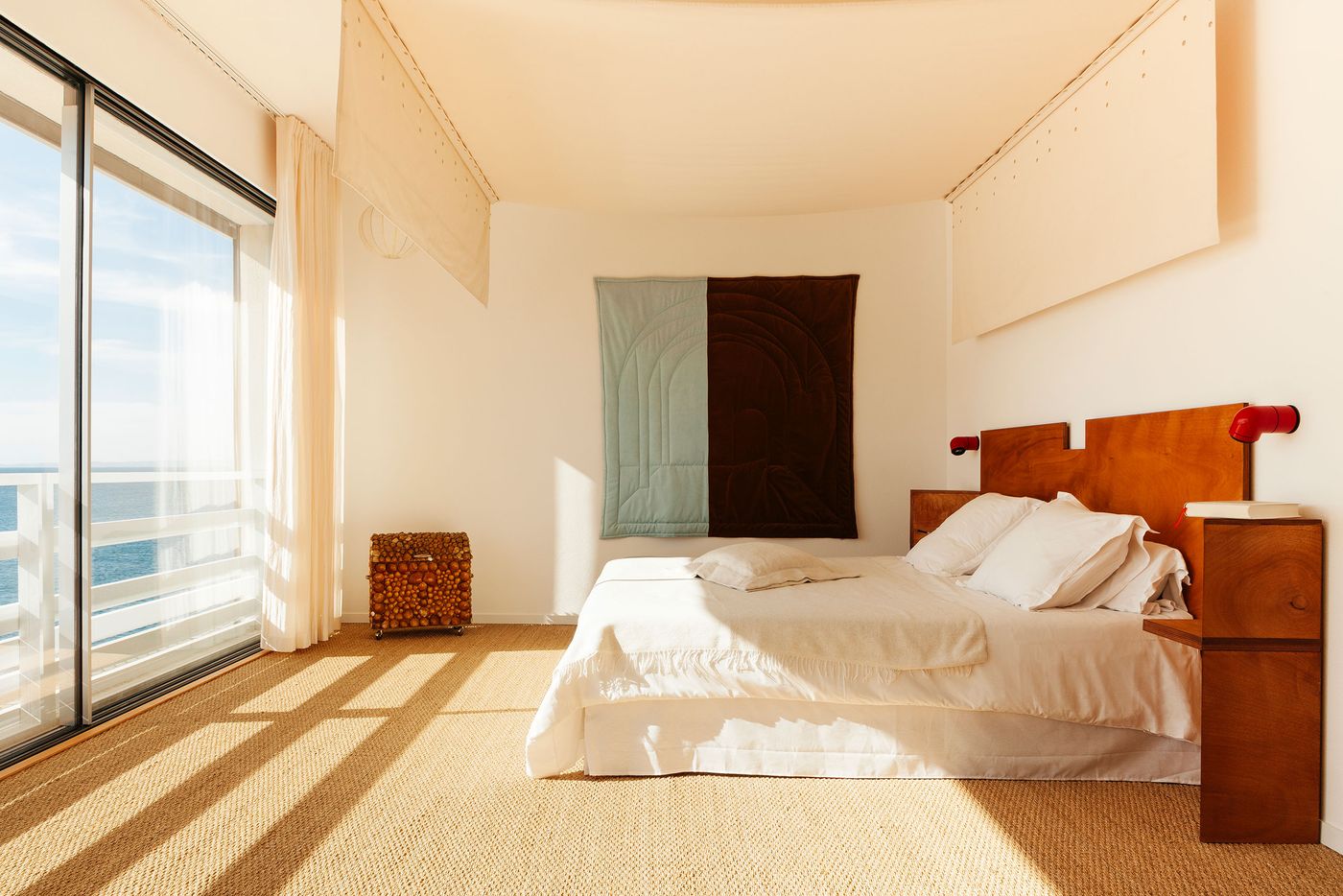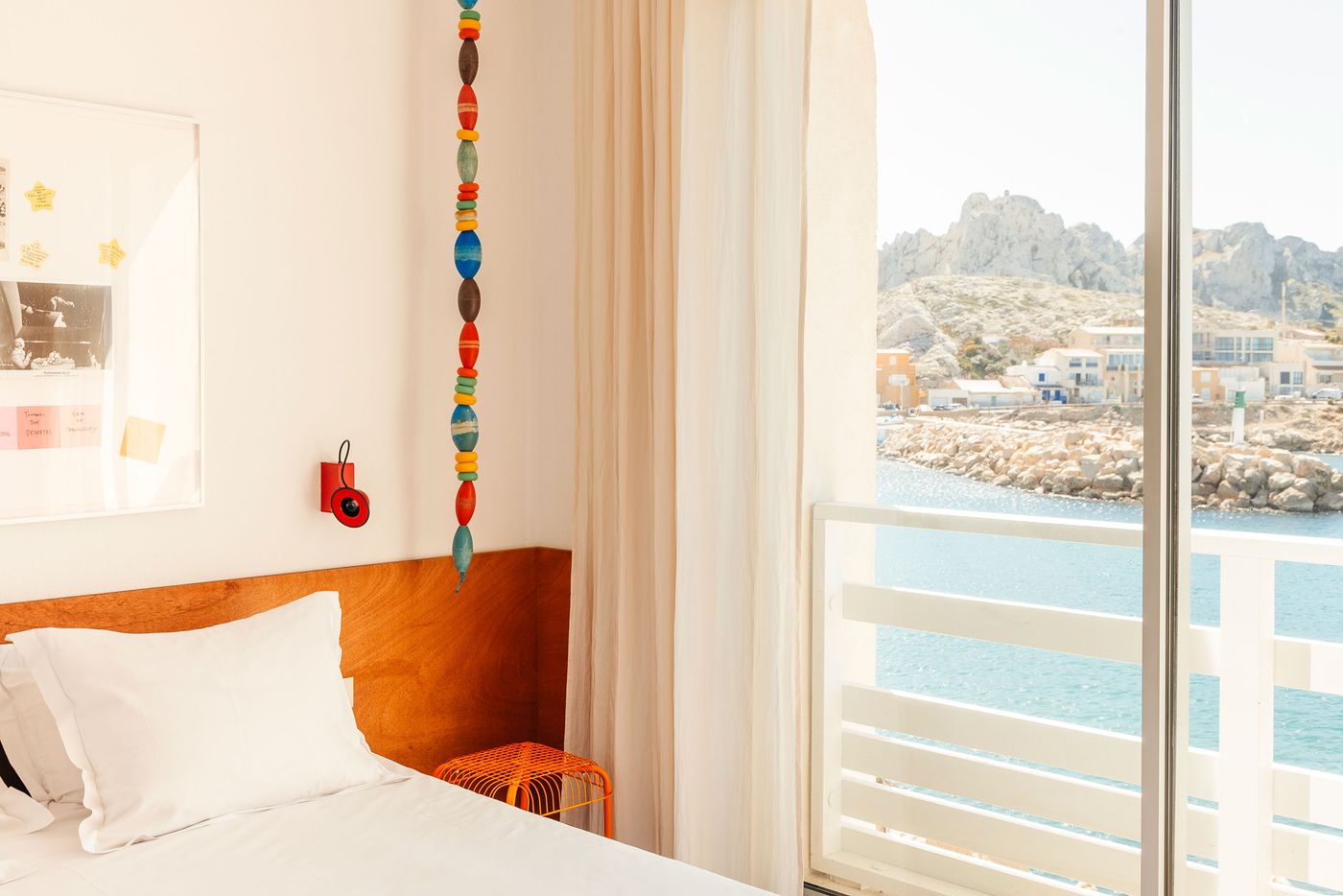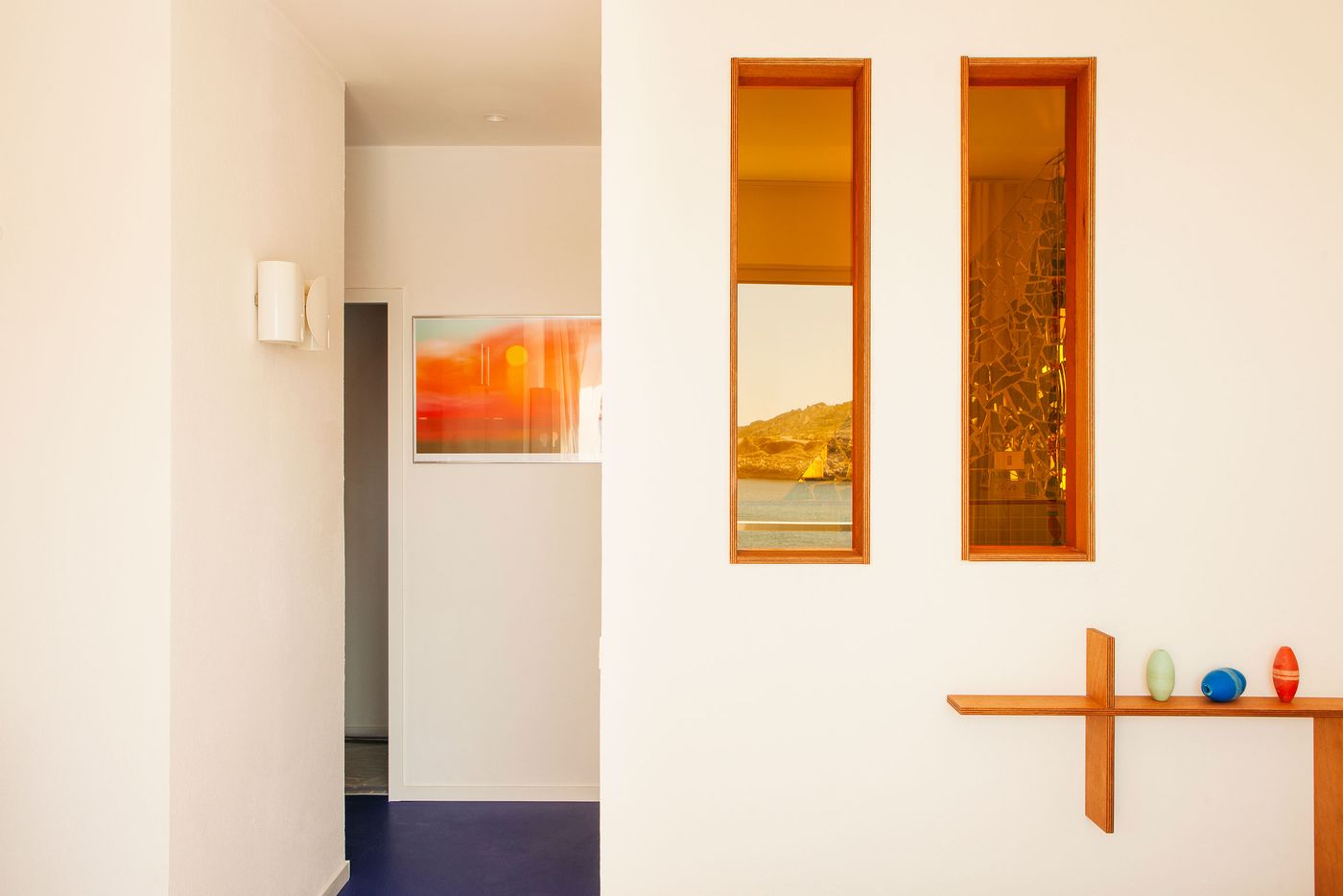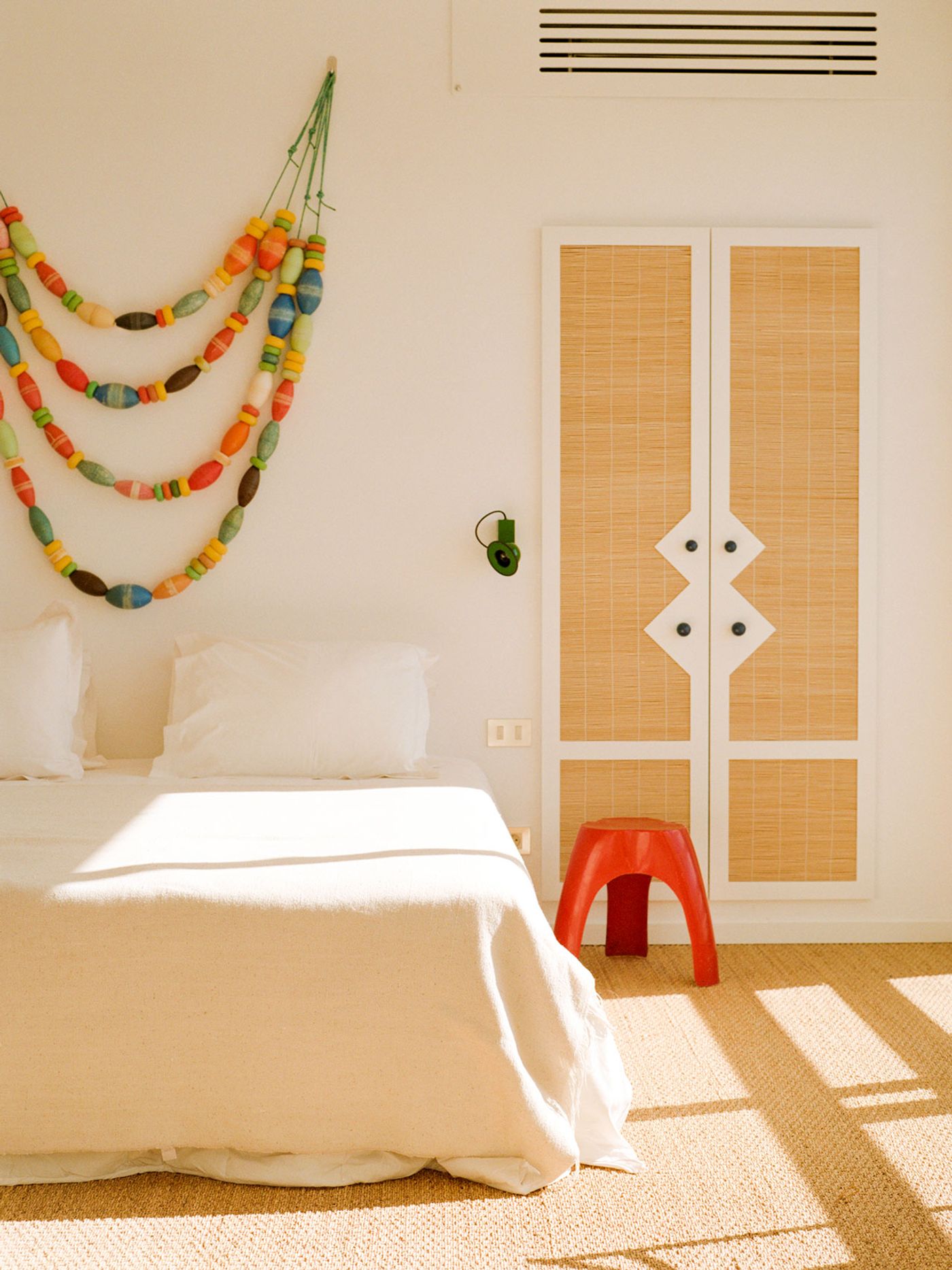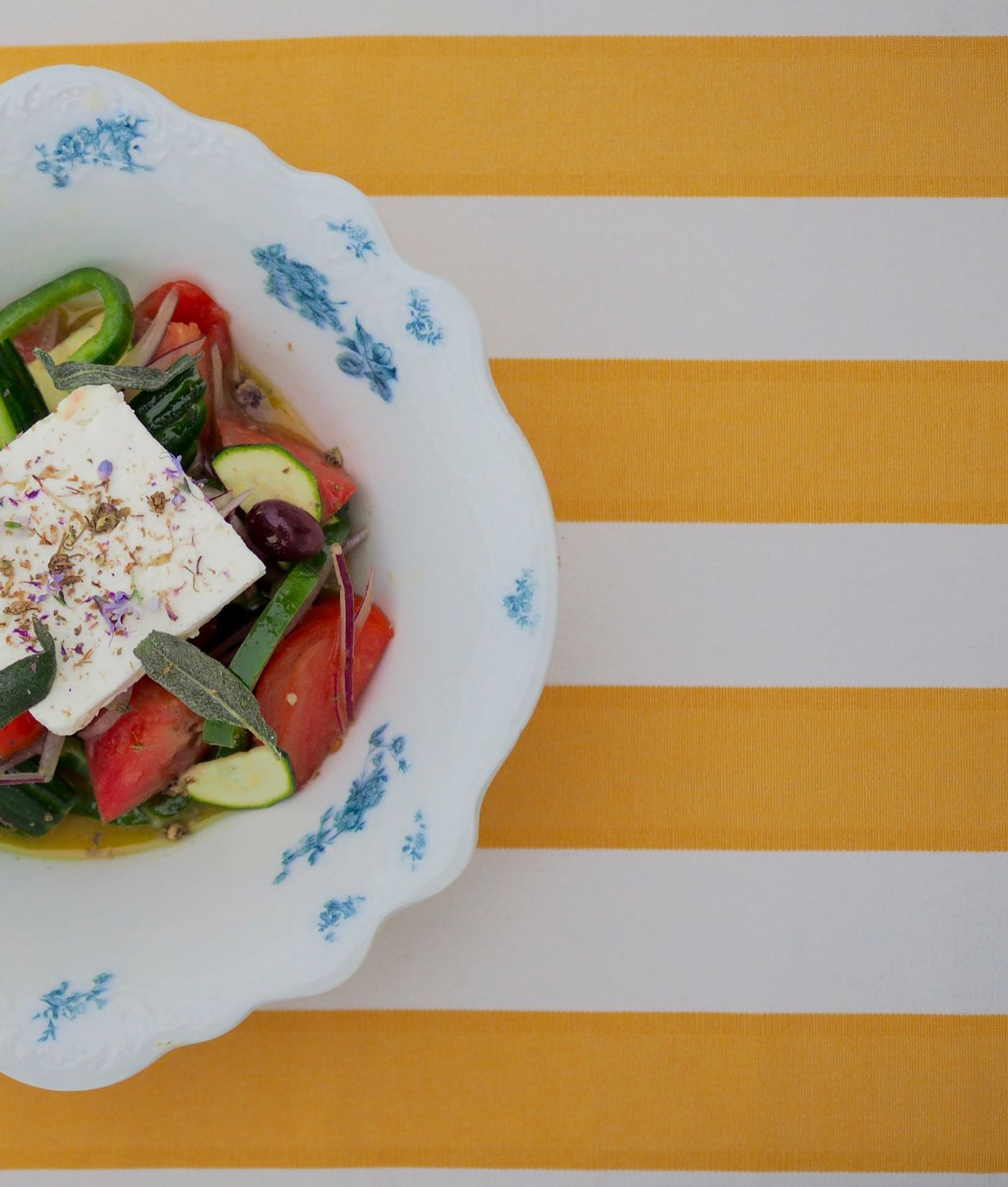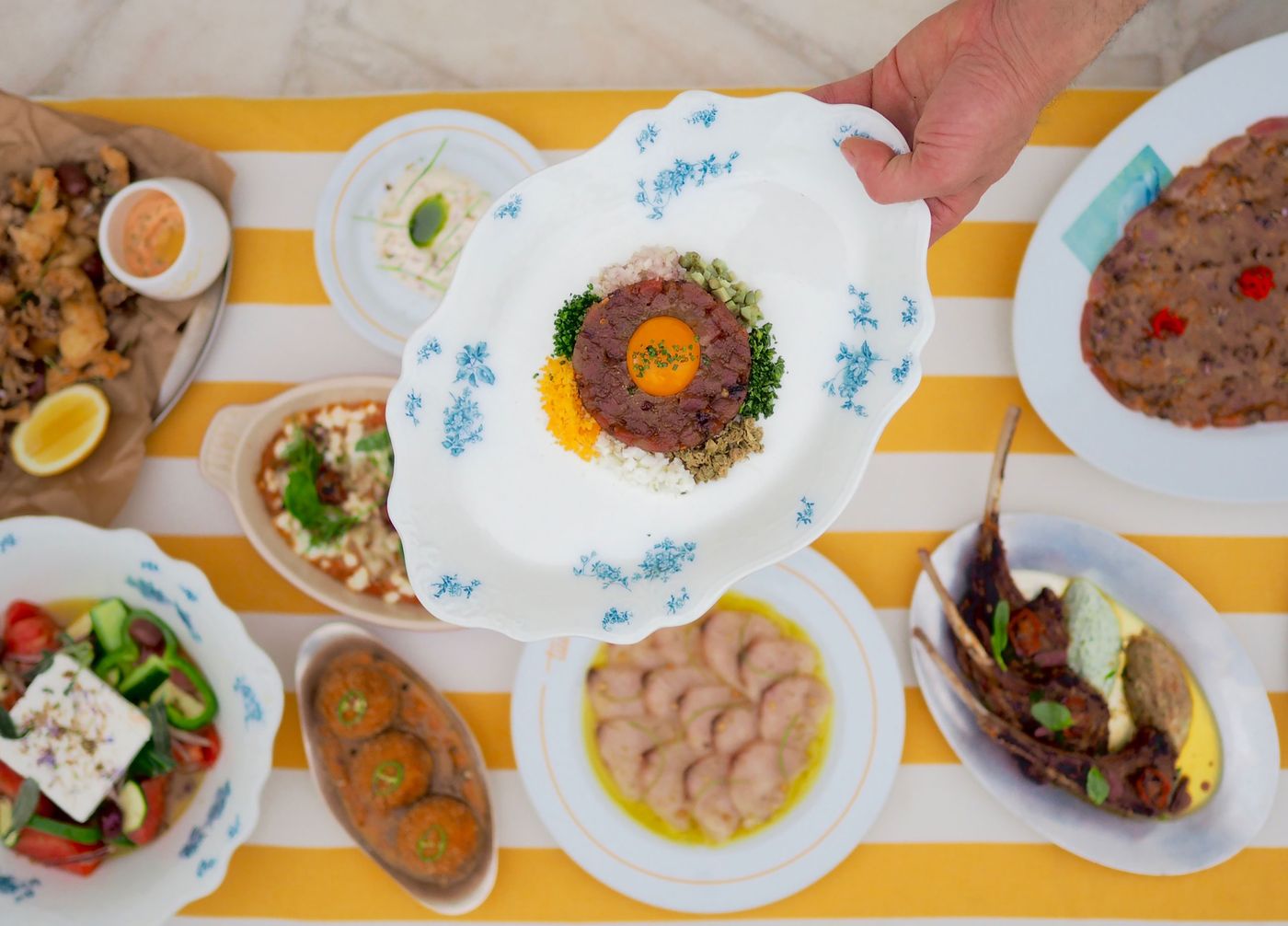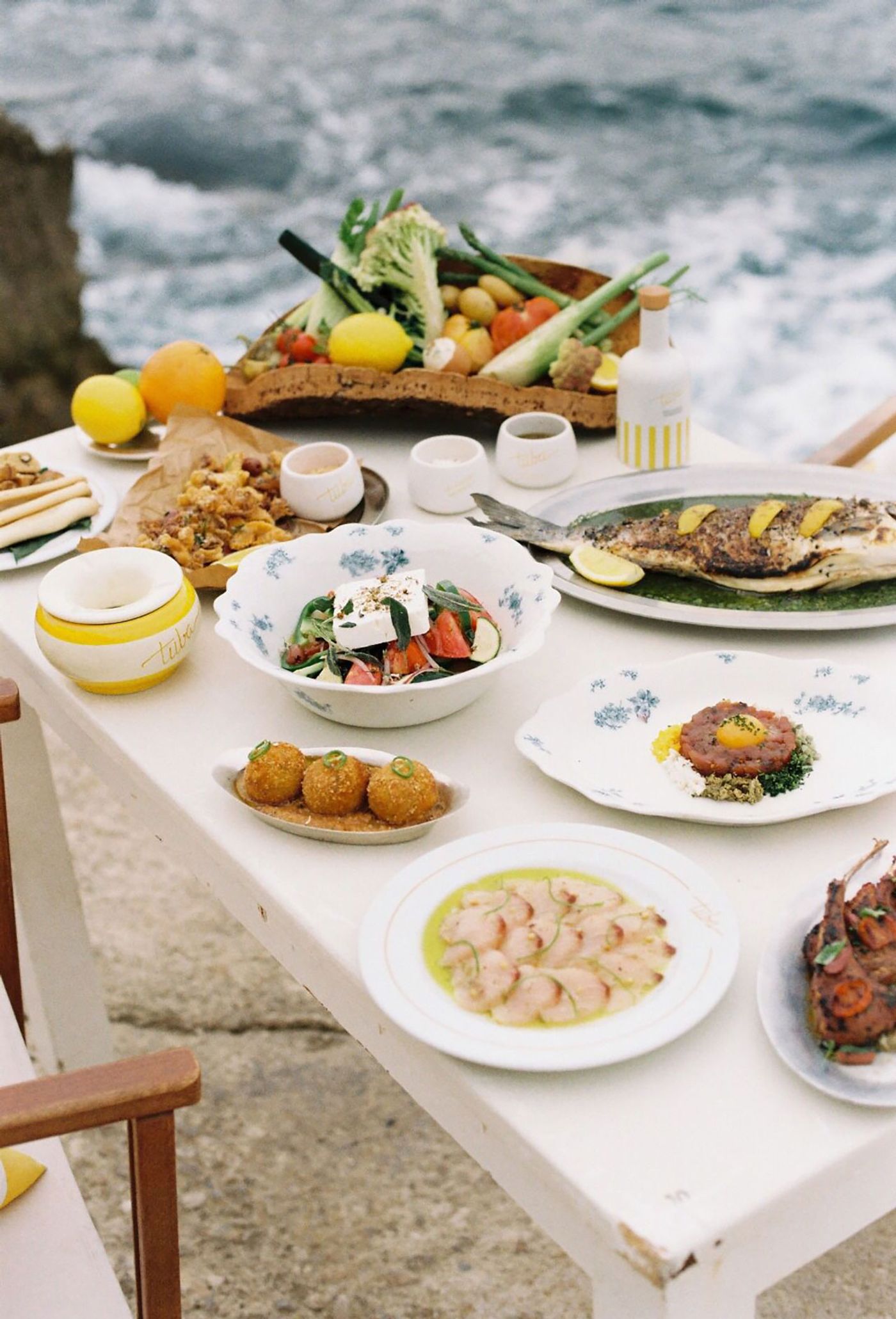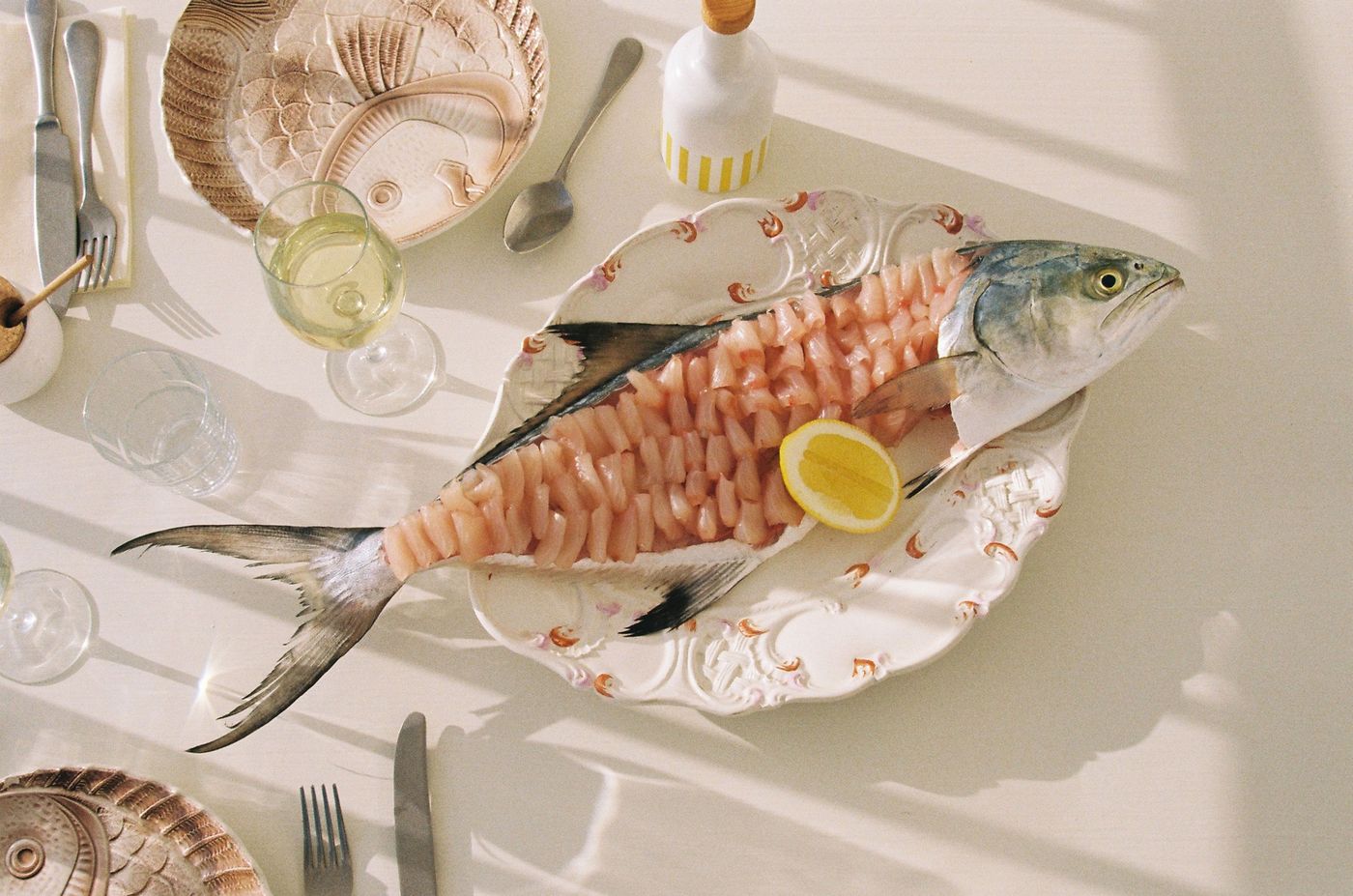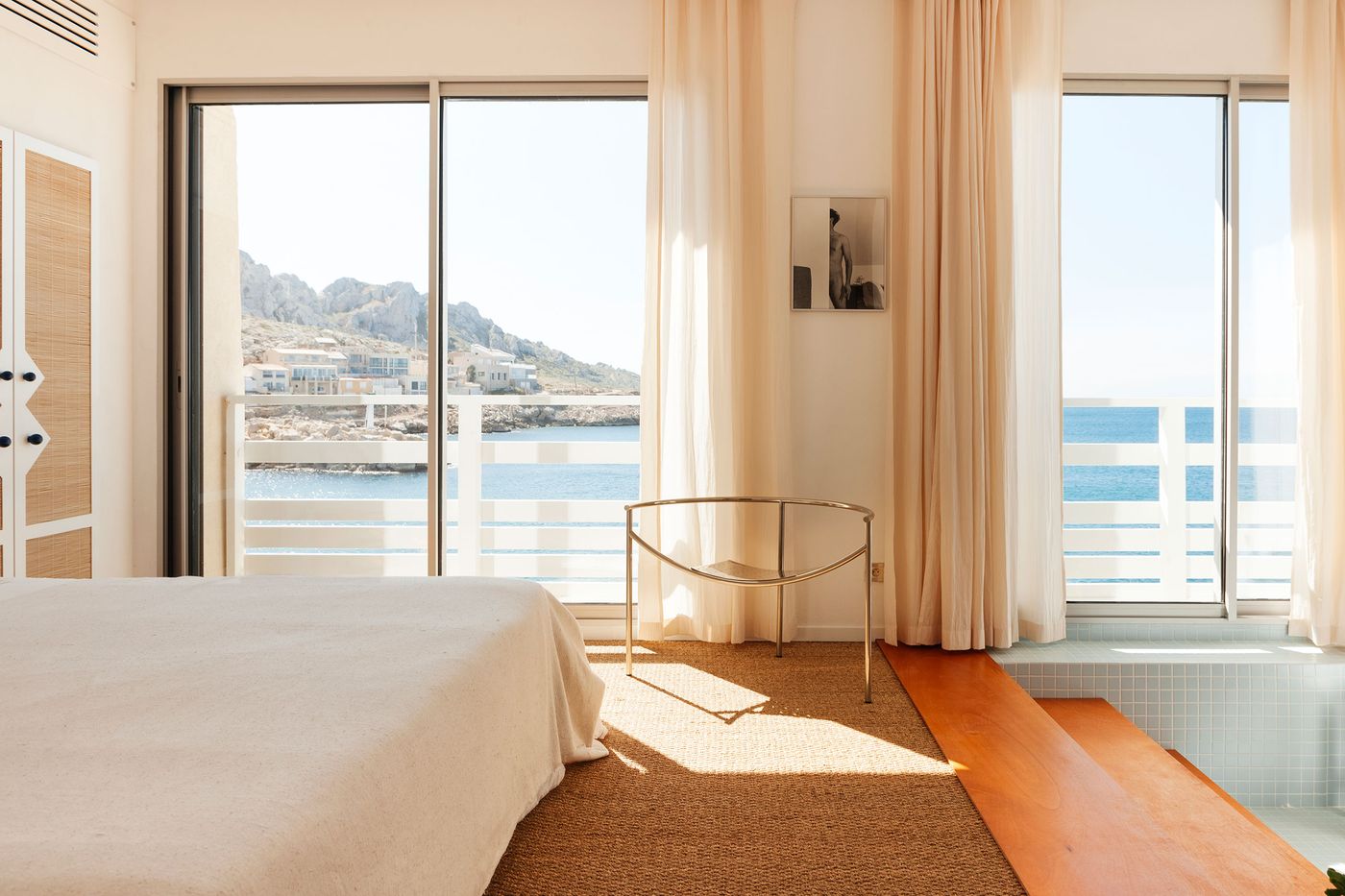
Tuba Club: A Boutique Hotel & Restaurant Outside Marseille is a Nostalgic Hideout for Slow Living Enthusiasts
Words by Eric David
Location
Marseille, France
Tuba Club: A Boutique Hotel & Restaurant Outside Marseille is a Nostalgic Hideout for Slow Living Enthusiasts
Words by Eric David
Marseille, France
Marseille, France
Location
Nestled in a rocky cove on the outskirts of Marseille, Les Goudes is a sleepy fishing village far from the limelight of the French Riviera. A 30-minute drive down the coastal road from the port city, the village nevertheless feels like you’ve reached the end of the world, not least because the road actually stops here on account of the Calanques National Park, a 20-kilometre stretch of limestone cliffs, known as “calanques”, that dramatically plunge into turquoise fjord-like inlets. It’s no wonder then that Marseillaise entrepreneur Grégory Gassa and film producer Fabrice Denizot chose this place to open Tuba Club, a pocket-sized hotel and restaurant conceived as “a hideout of friends, lovers of idleness, and fervent defenders of letting go”. Taking its name after the building’s previous life as a scuba diving centre, Tuba came to life in collaboration with Parisian architect and interior designer Marion Mailaender, who also grew up in Marseille and whose redesign channels the carefree memories of the trio’s childhood in the city in the 1980s and 1990s whilst paying homage to the venue’s storied history.
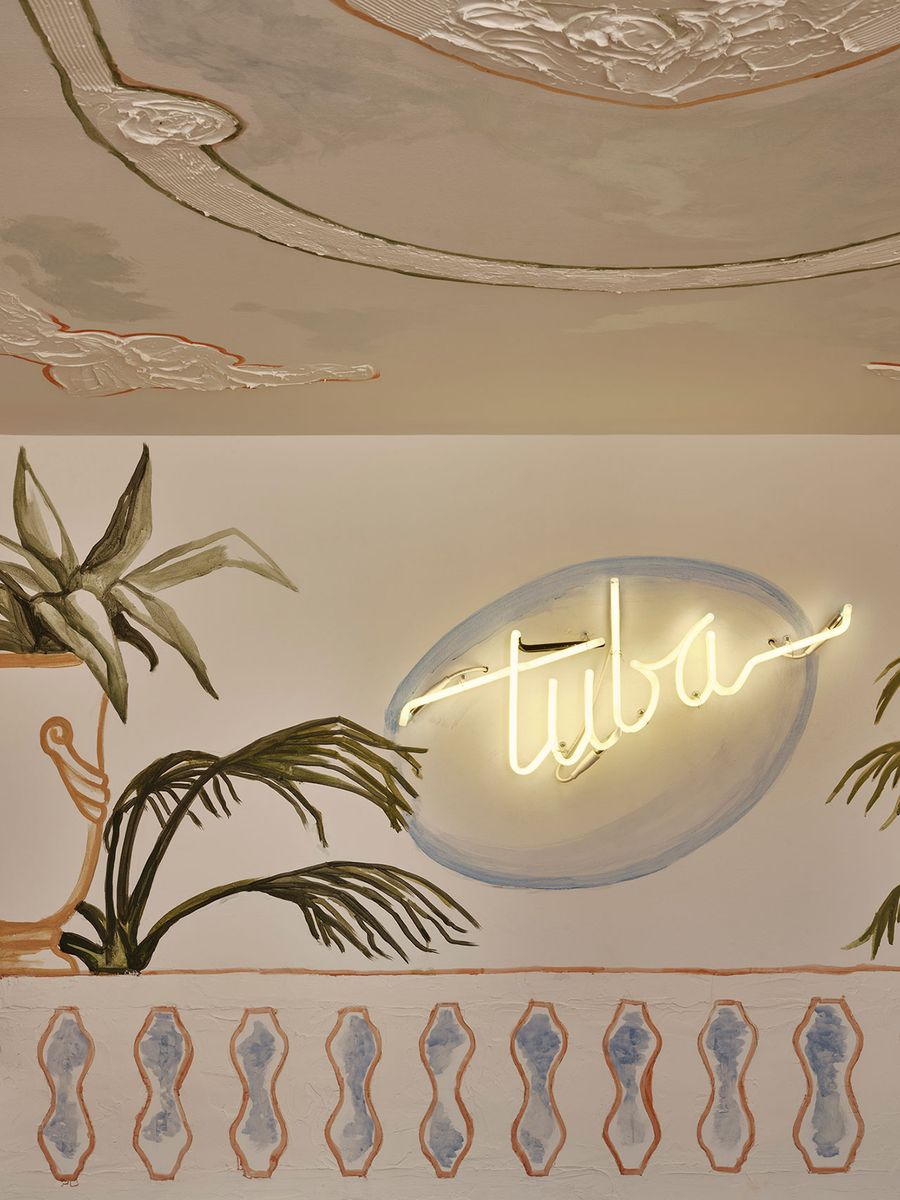
Photography by Florian Touzet.

Photography by Florian Touzet.
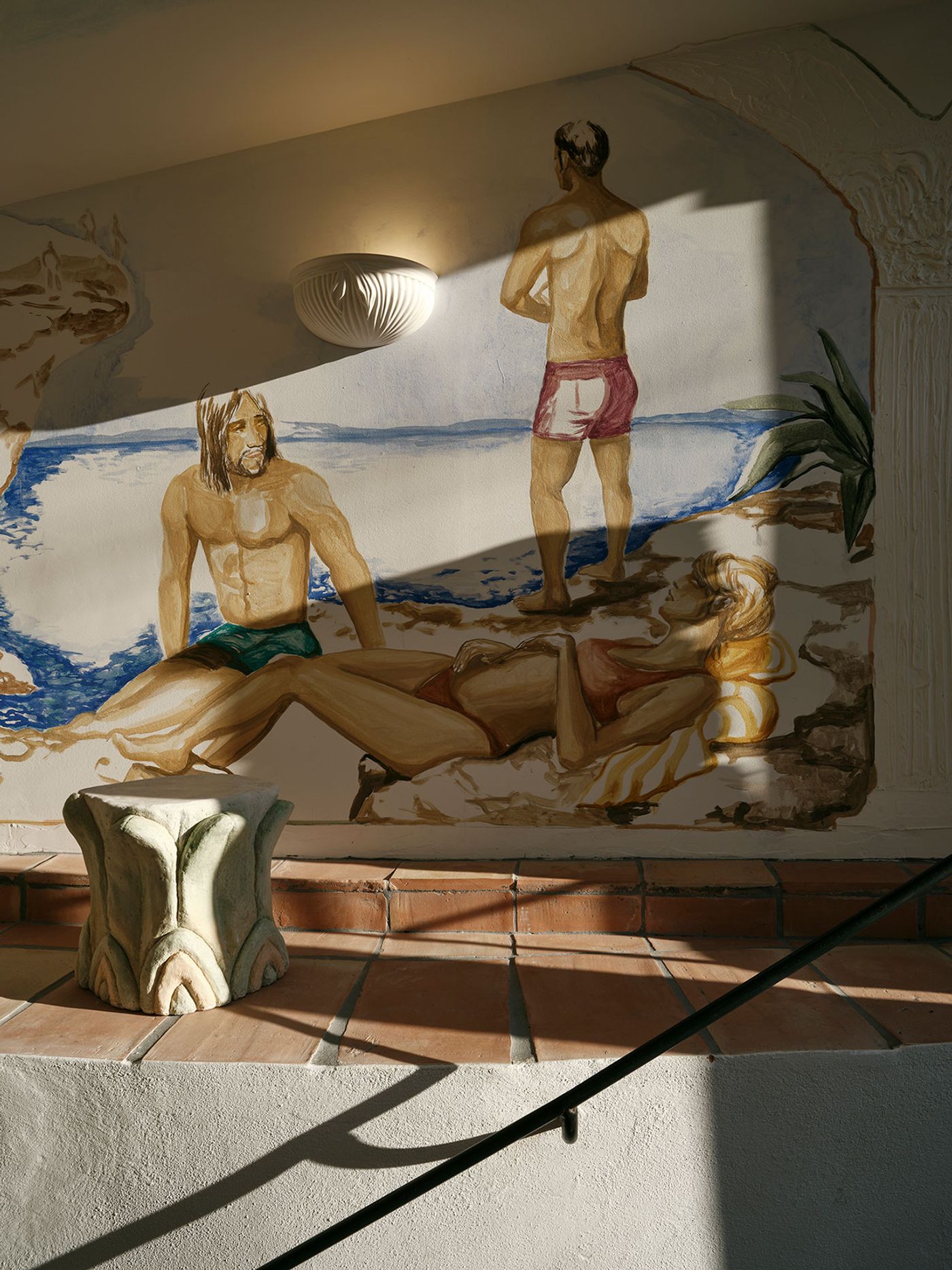
Photography by Florian Touzet.
Although it originally opened its doors in 2020, due to the pandemic, it only saw its first full season last year. Despite this fact, Tuba has already established a reputation within France’s creative circles thanks to its cool vibes, laid-back ambience and seducing nostalgia, not to mention its gorgeous sea views of the Mediterranean. Originally comprising five intimate cabin-style rooms, this season the hotel is unveiling an additional three large, light-filled suites in a villa-like extension, complete with generous shared living areas, plus a new rooftop terrace serving aperitivos and cocktails, while Chef Sylvain Roucayrol is taking the helm of the 80-seat restaurant with a seafood-based menu that celebrates regional gastronomy.
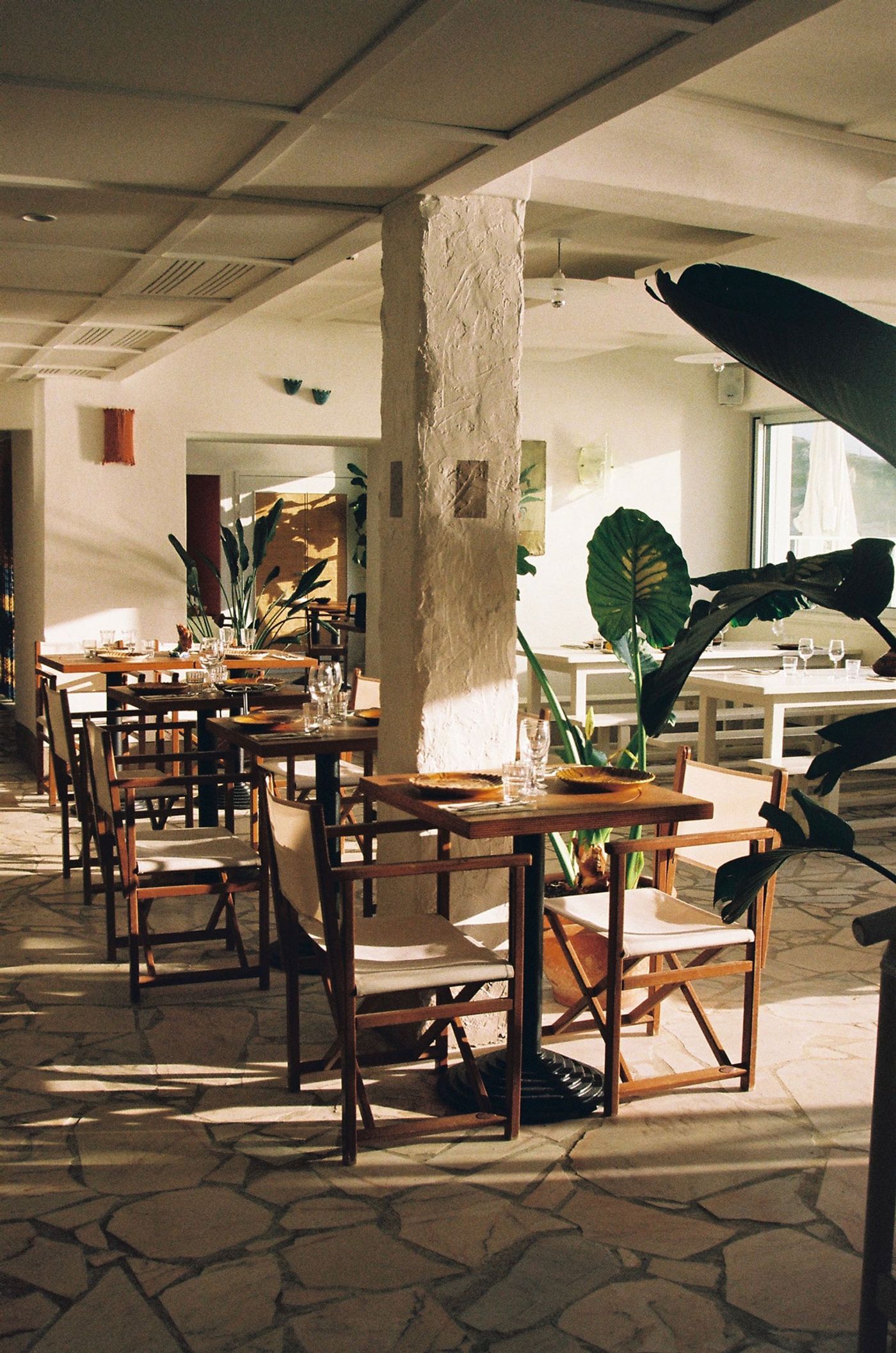
Photography by Delaney Inamine.
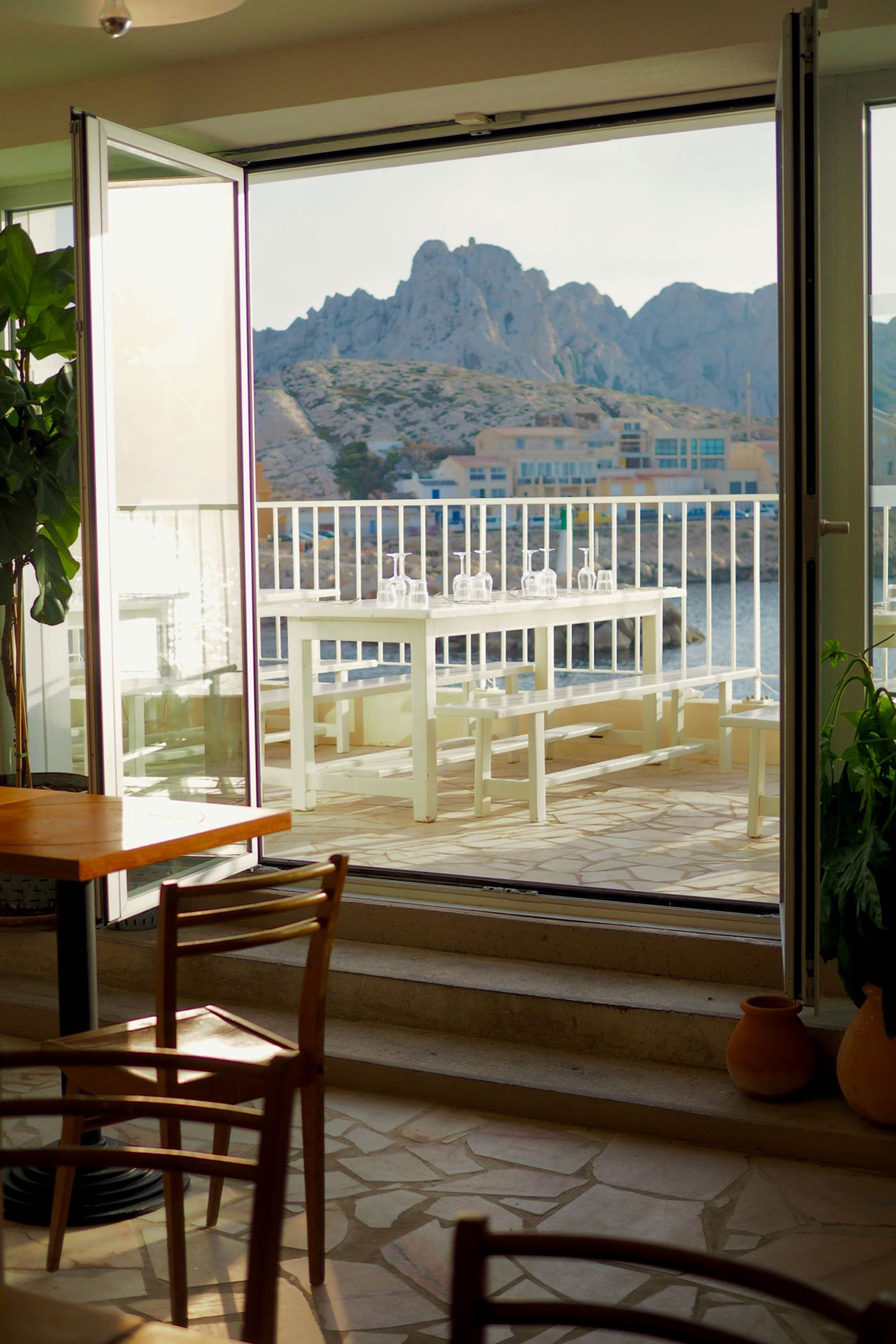
Photography by Delaney Inamine.
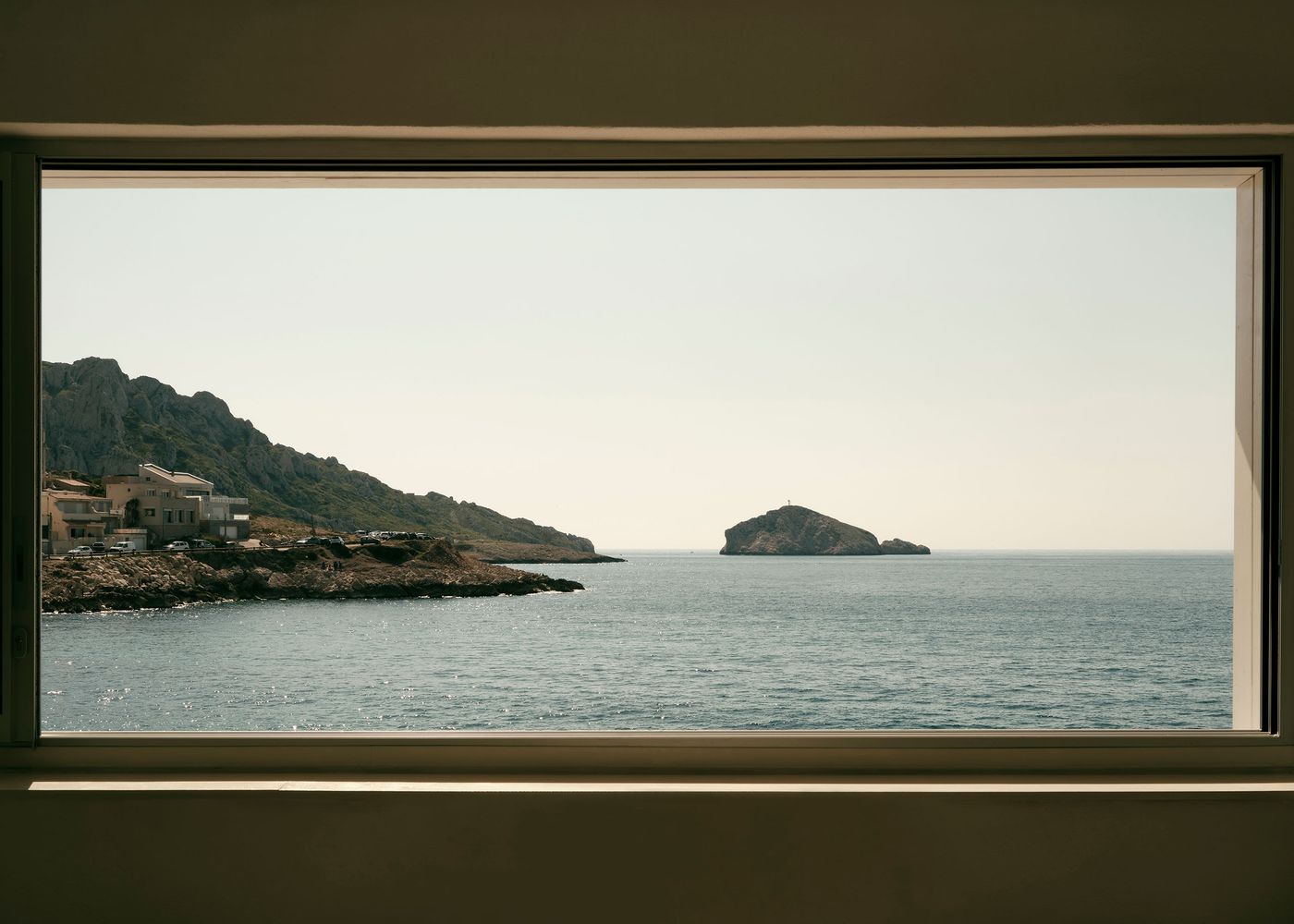
Photography by Florian Touzet.
Originally built about a century ago as a ‘cabanon’ or fishing shed at the entrance of the village, the building operated as a hotel in the 1940s, a nightclub in the 1970s, and a diving club in the 1980s where oceanographer Jacques Cousteau and record-breaking diver Jacques Mayol used to hang out — Mayol’s life story was famously fictionalised in Luc Besson’s iconic film The Big Blue. Left abandoned for many years, the building had suffered sufficient storm damage by the time Gassa, Denizot and Mailaender found the property a few years ago. Working with Marseillaise architect Delphine André, the team thoughtfully renovated the premises, opening up views towards the sea with respect to its humble origins and the coastline. Dominating the building’s exterior, local creek-coloured stones and white painted wooden cladding were chosen for their ability to withstand the elements as demonstrated by the village’s port wall and fishing boats bobbing in the cove.
Drawing inspiration from the vernacular simplicity of the area’s fishing cabins as much as by Eileen Gray and Le Corbusier's modernist beach huts in Roquebrune-Cap-Martin, the revamped interiors are a paradigm of soulful minimalism. In the restaurant, a muted colour palette of whitewashed walls, stone-paved floors and white-painted timber furnishings is complemented with rattan and ceramic accents; a scheme of unpretentious simplicity that allows the vibrant dishes and dreamy sea views to take centre stage. In the adjacent five cabin-style guest rooms, plywood panelling, jute carpeting and white linens imbue the spaces with warmth, while vintage postcards, books about diving, shells and ceramic lamps sourced from flea markets in Avignon and Marseille inject a sense of character without upending their minimalist sensibility.
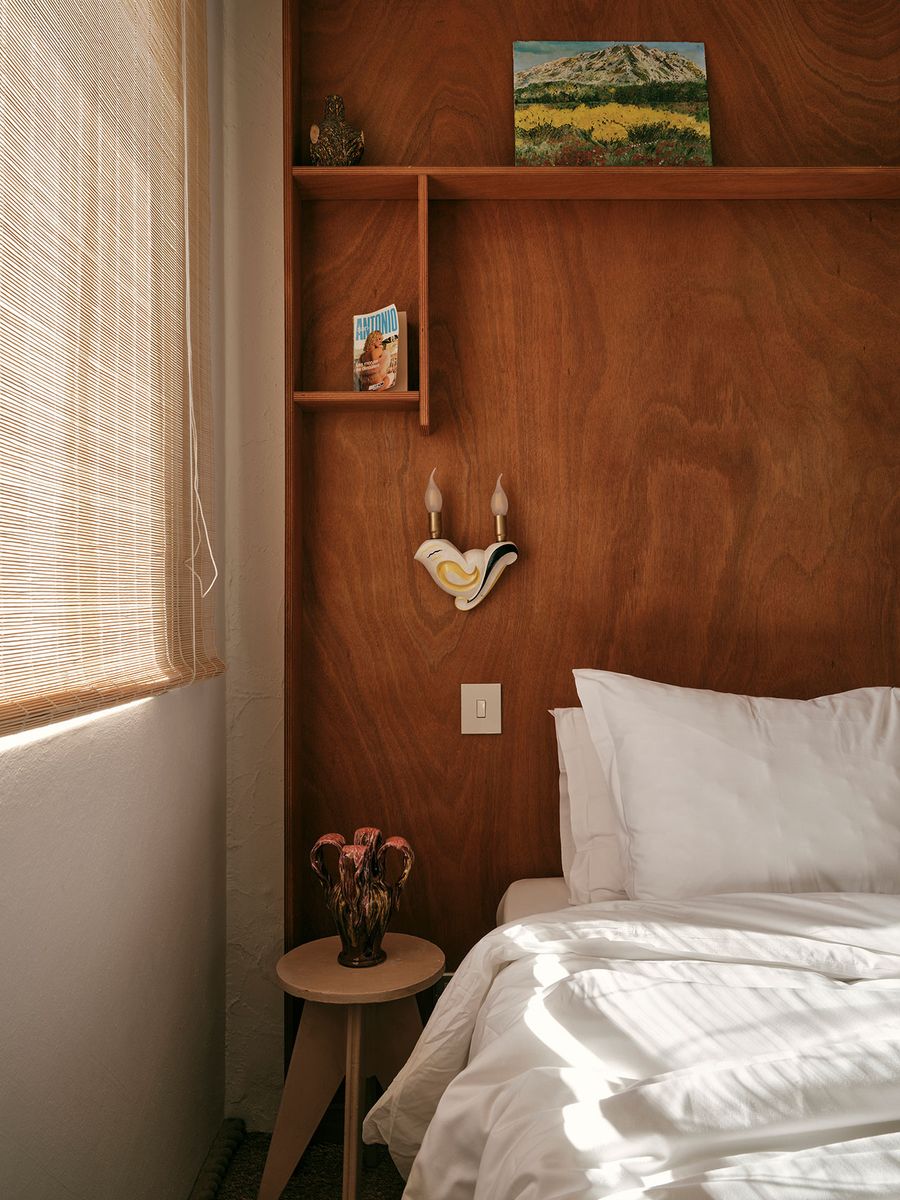
Photography by Florian Touzet.

Photography by Florian Touzet.
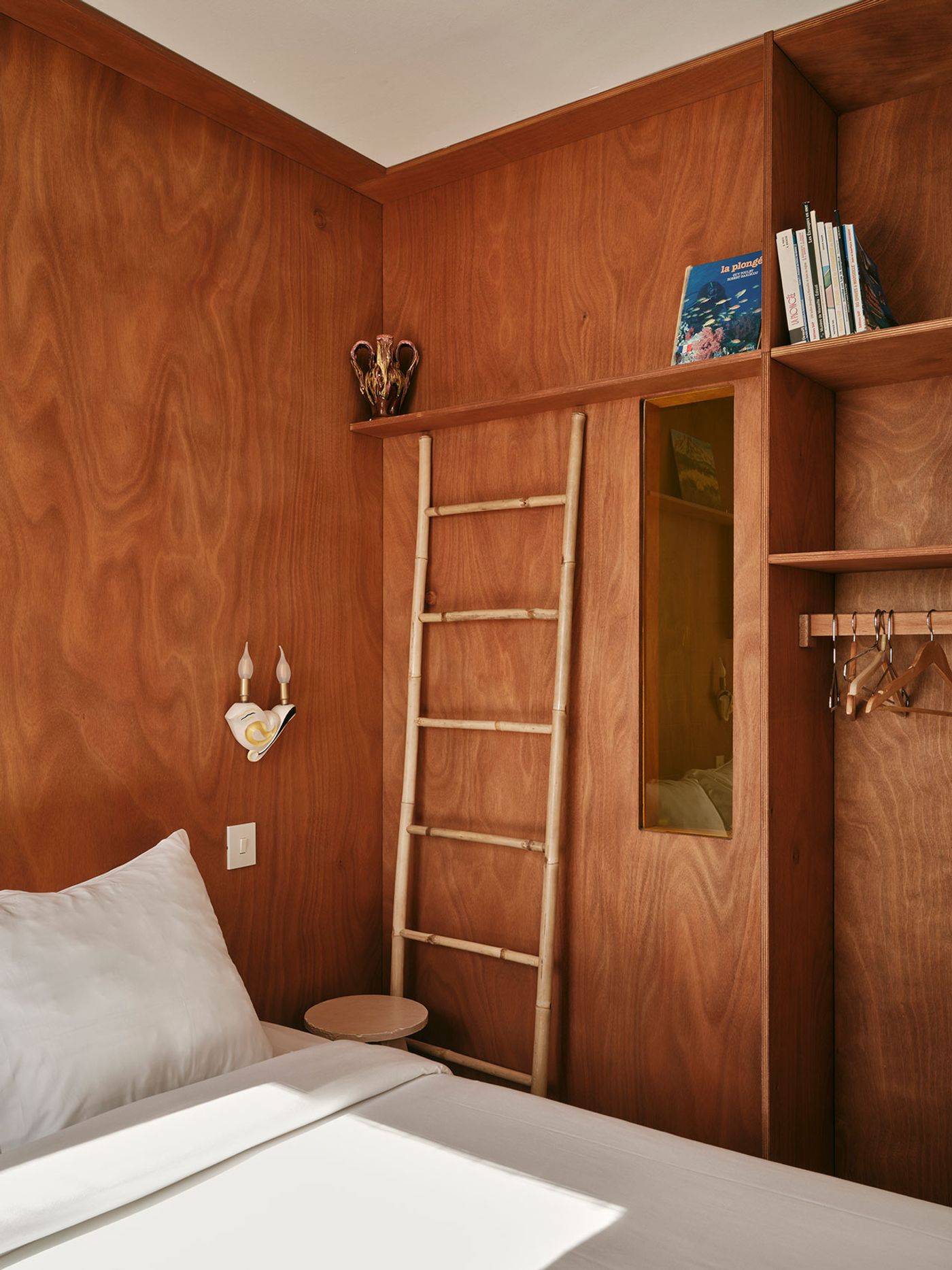
Photography by Florian Touzet.
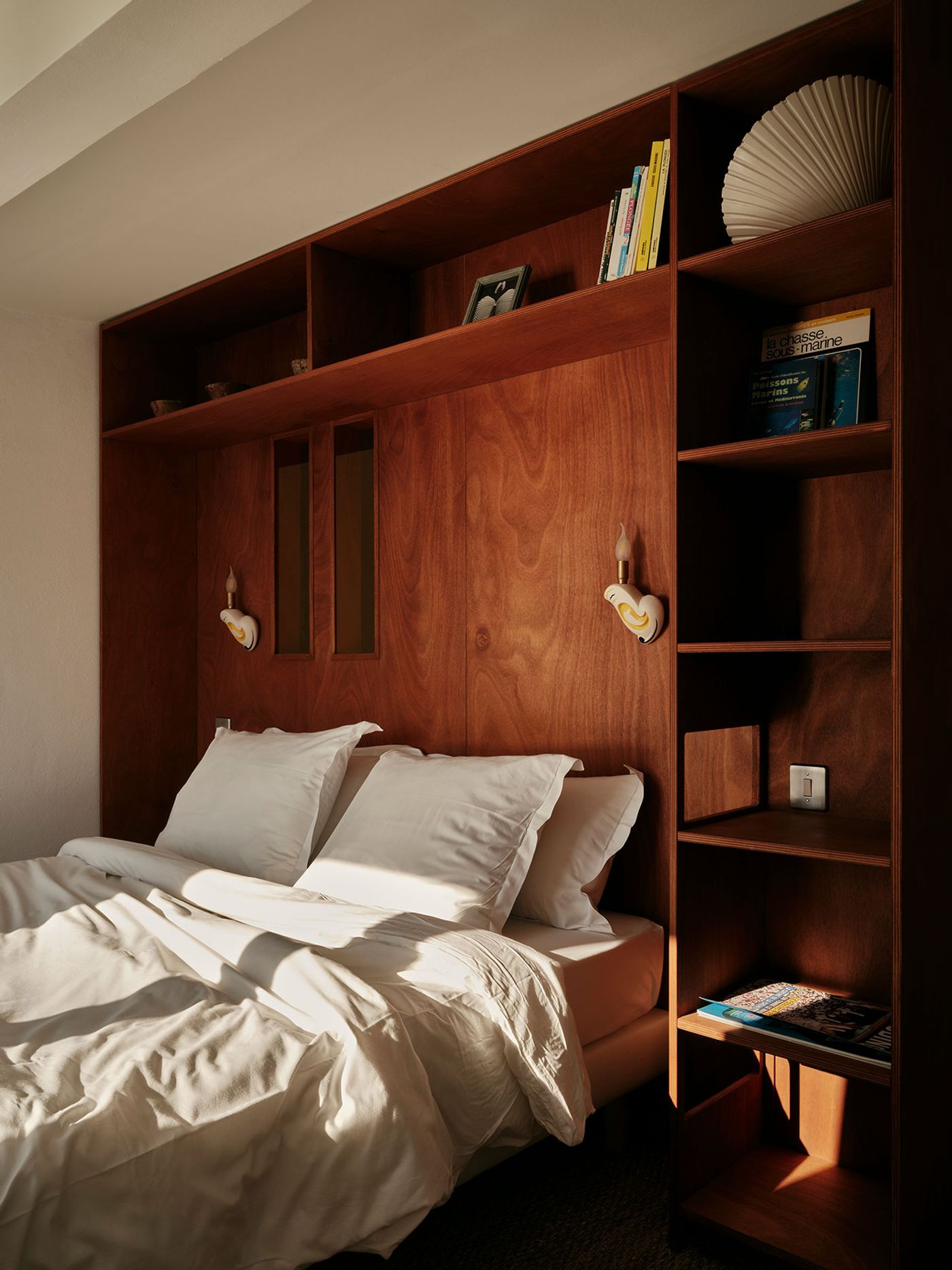
Photography by Florian Touzet.

Photography by Florian Touzet.
Considerably more spacious than the five rooms, Tuba’s three suites making their debut this season are housed in an extension built above the original ‘cabanon’ which Gassa and Denizot recently acquired. More of a vacation home than a hotel, the suites share a living room, kitchen and private terrace overlooking the sea. As is the case with the rooms and restaurant on the lower level, the combination of natural materials, upcycled furniture and vintage objects make for characterful interiors as well as attest to the hotel’s environmentally-friendly practices.
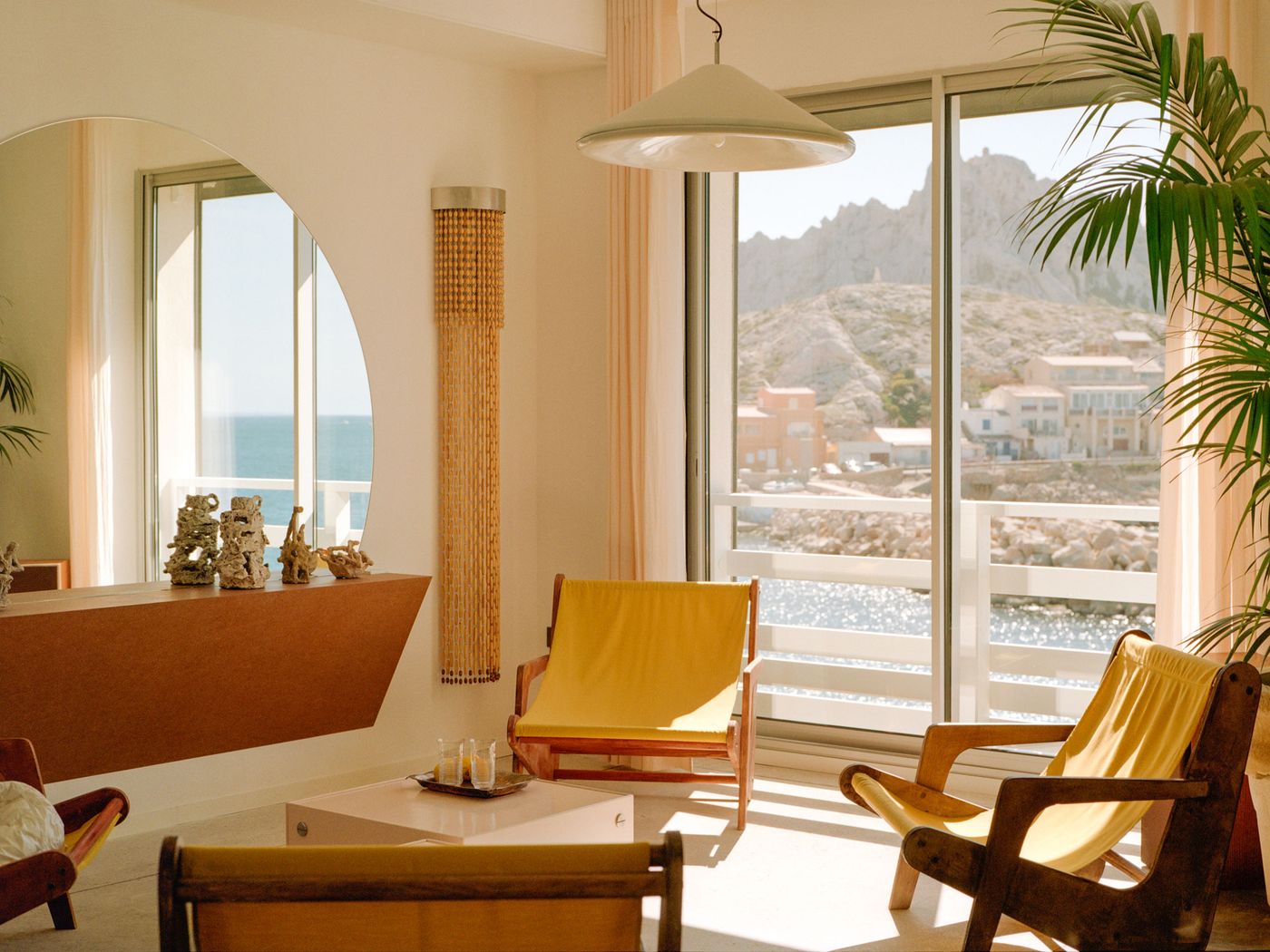
Photography by Edouard Sanville.
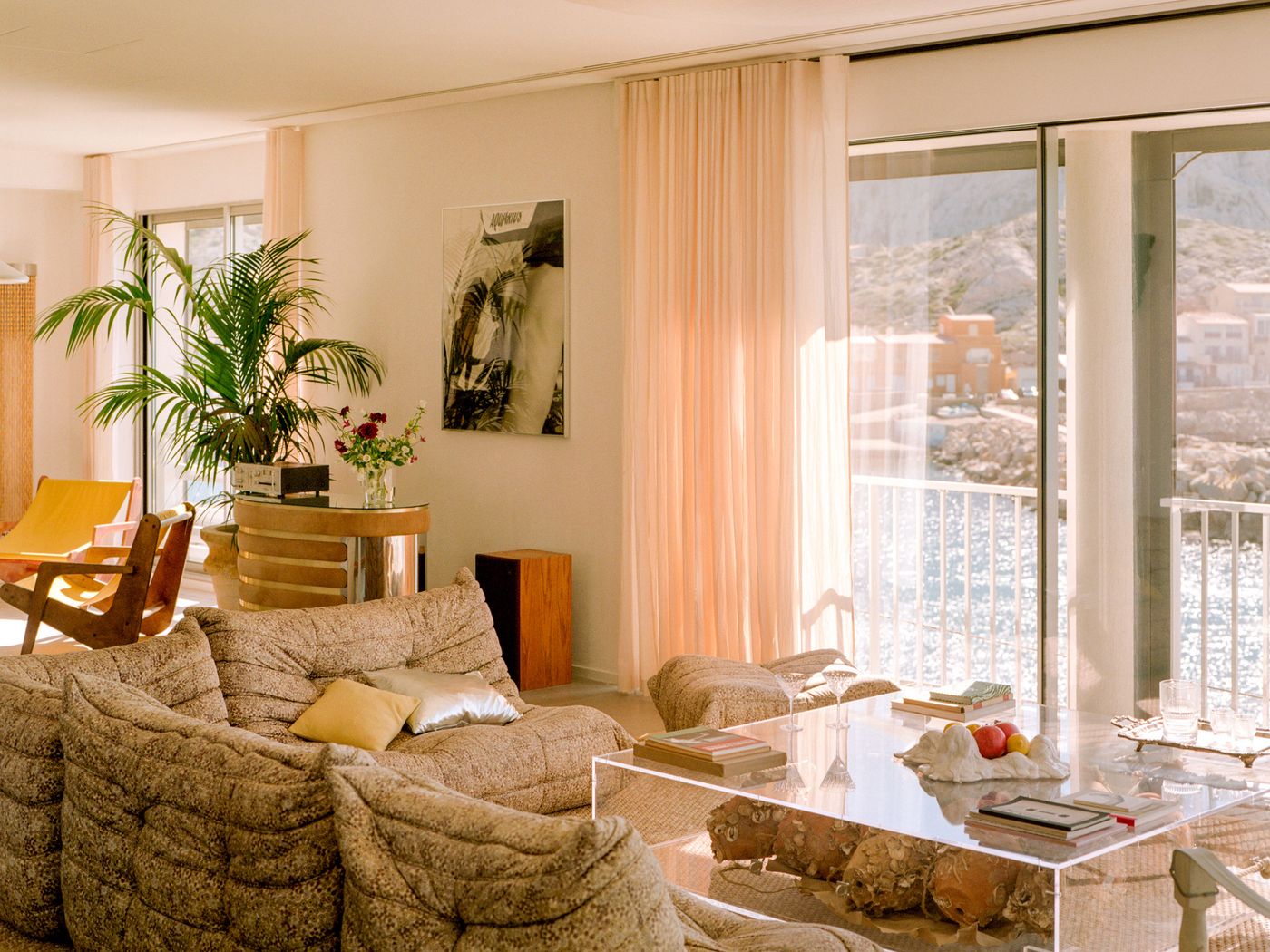
Photography by Edouard Sanville.
For the living room, Mailaender has opted for a 1970s retro-glam aesthetic, centred on the iconic Togo sofa – designed by Michel Ducaroy in 1973 for Ligne Roset, the sofa is modelled according to the designer on “a tube of toothpaste folded back on itself”. Vintage consoles, canvas chairs, mirrors and black and white photographs echo the sofa’s 1970s style, while a bespoke “Poulpe Fiction” coffee table in the form of a glass box containing ancient clay octopus traps retrieved from the bottom of the sea adds nautical touches, as do the bed canopies made from re-purposed boat canvas and decorative wall hangings constructed out of colourful fishing buoys in the suite’s bedrooms.
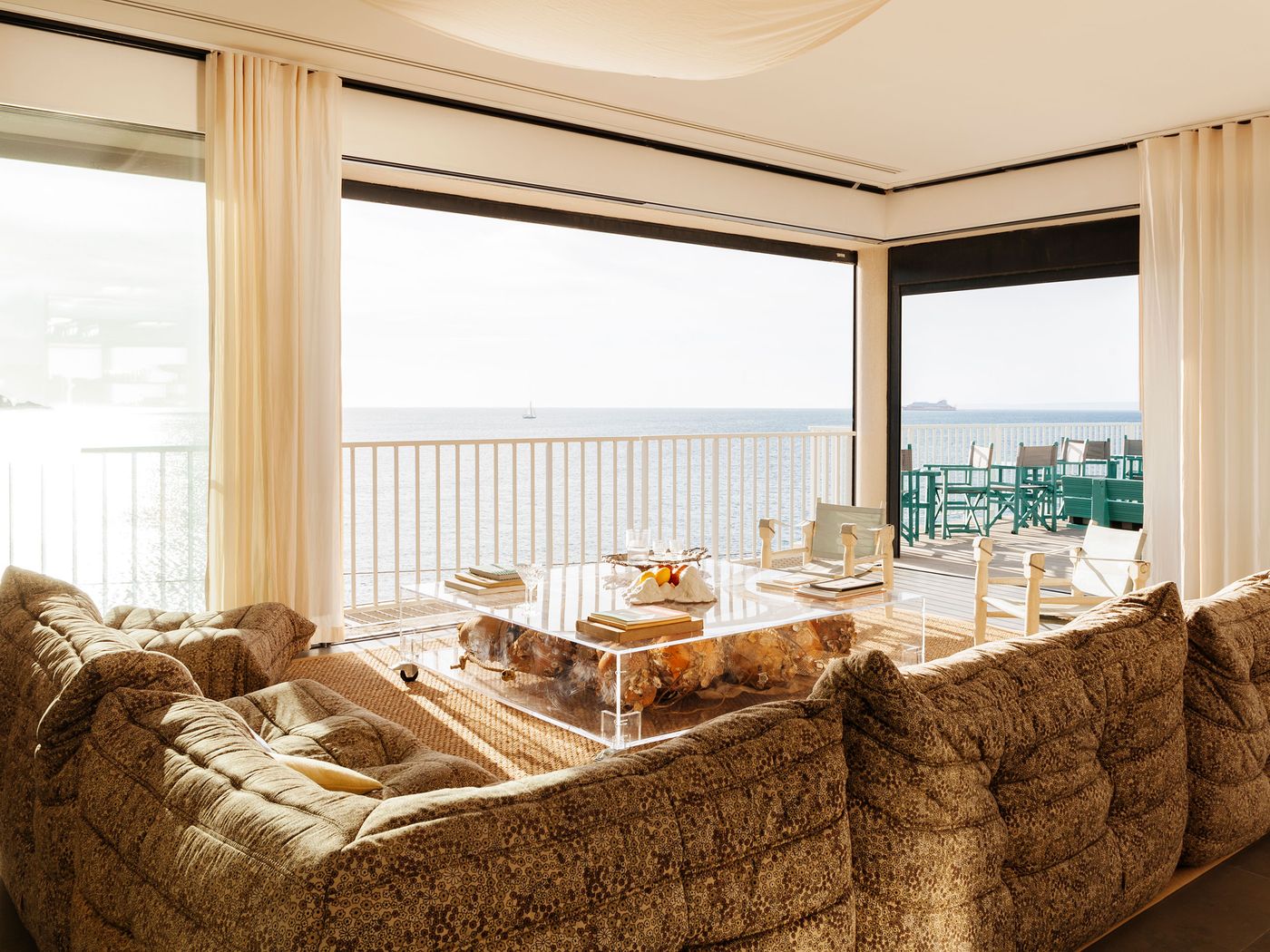
Photography by Edouard Sanville.
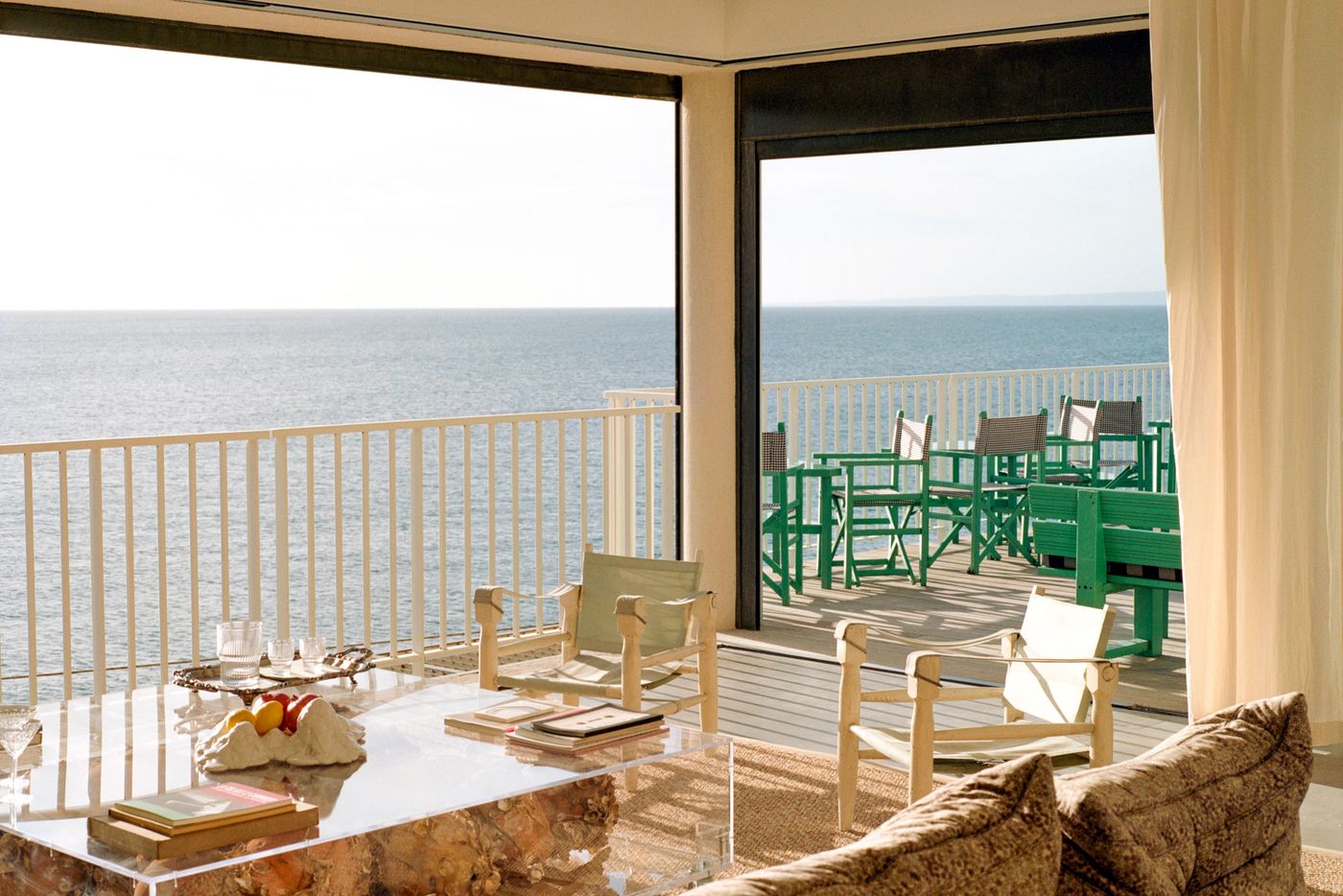
Photography by Edouard Sanville.
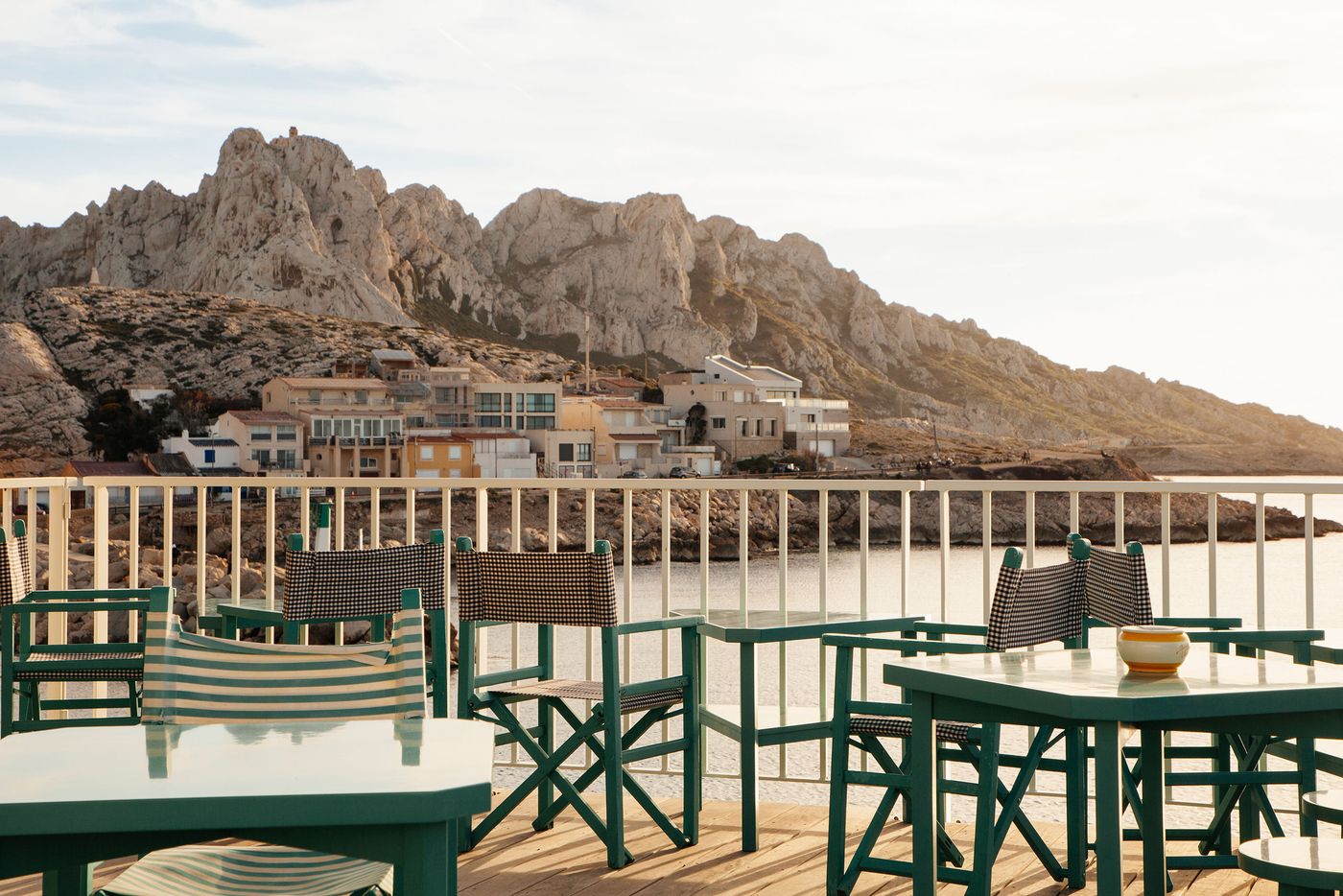
Photography by Edouard Sanville.
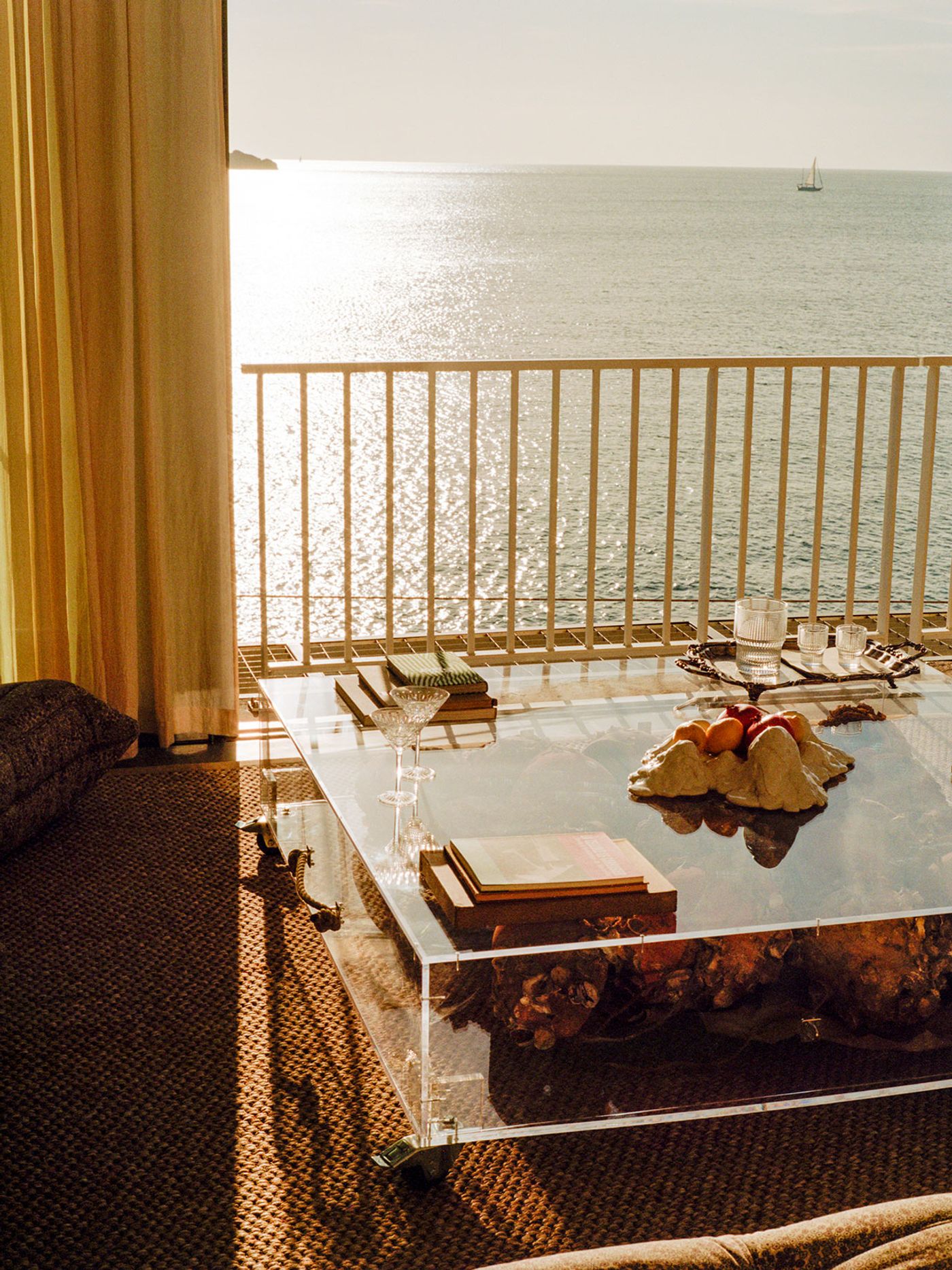
Photography by Edouard Sanville.

Photography by Edouard Sanville.
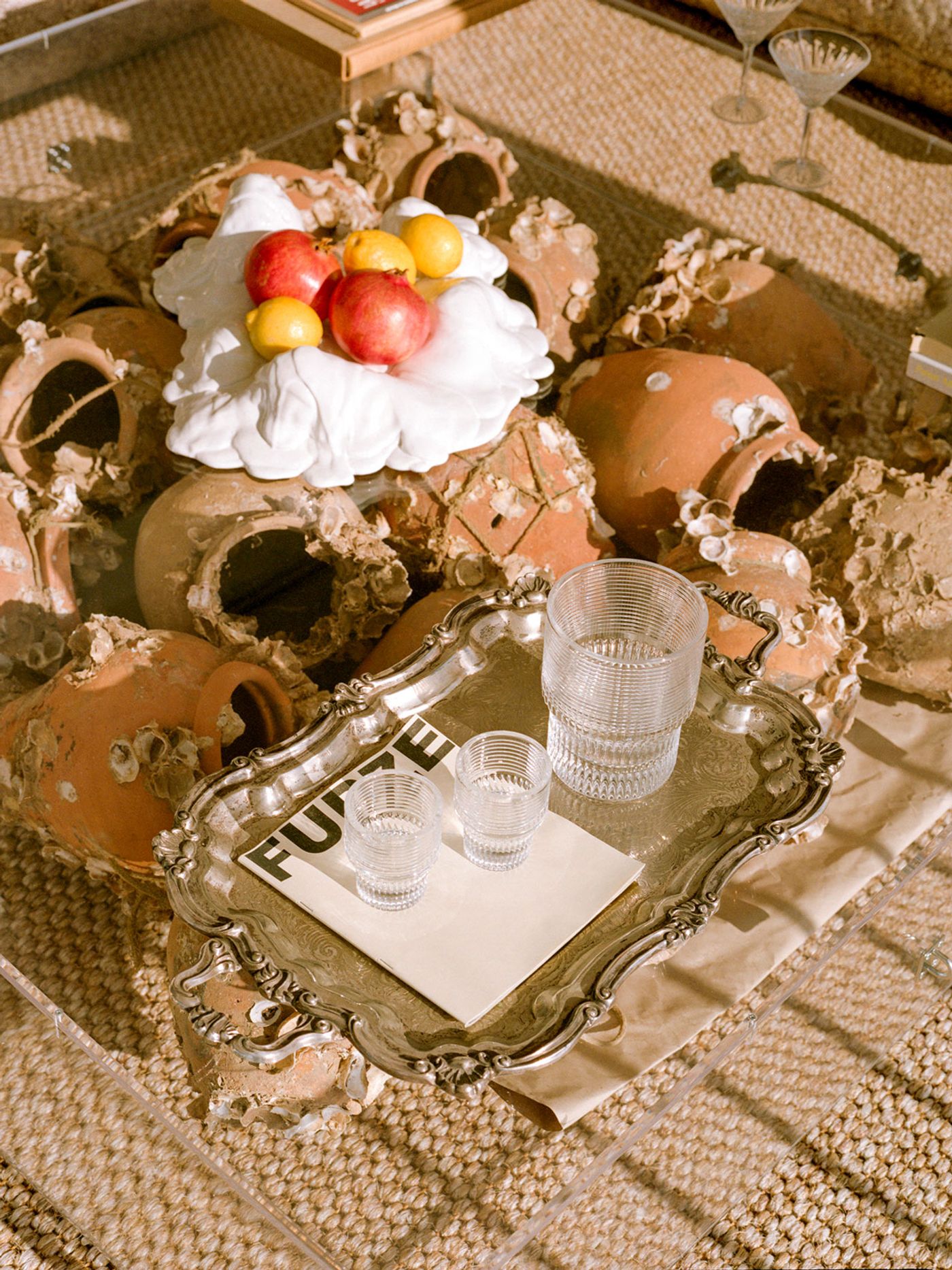
Photography by Edouard Sanville.
The collection of repurposed and vintage objects is complemented by a curation of artworks throughout the premises courtesy of Southway Studio, a platform for Marseille artists and designers co-founded by artists and curator Emmanuelle Luciani, starting with a large fresco in the entrance depicting sunbathers.

Photography by Edouard Sanville.
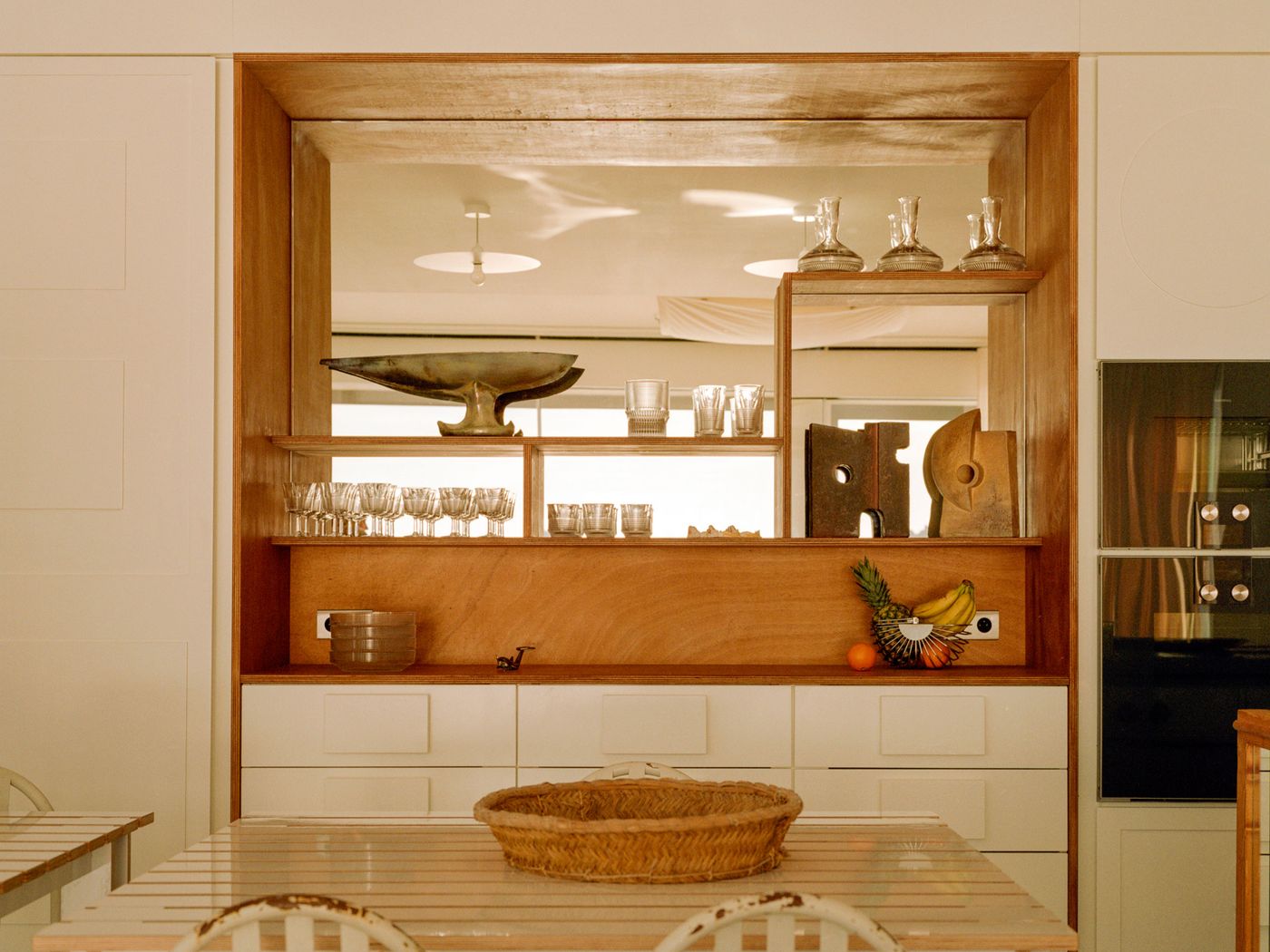
Photography by Edouard Sanville.
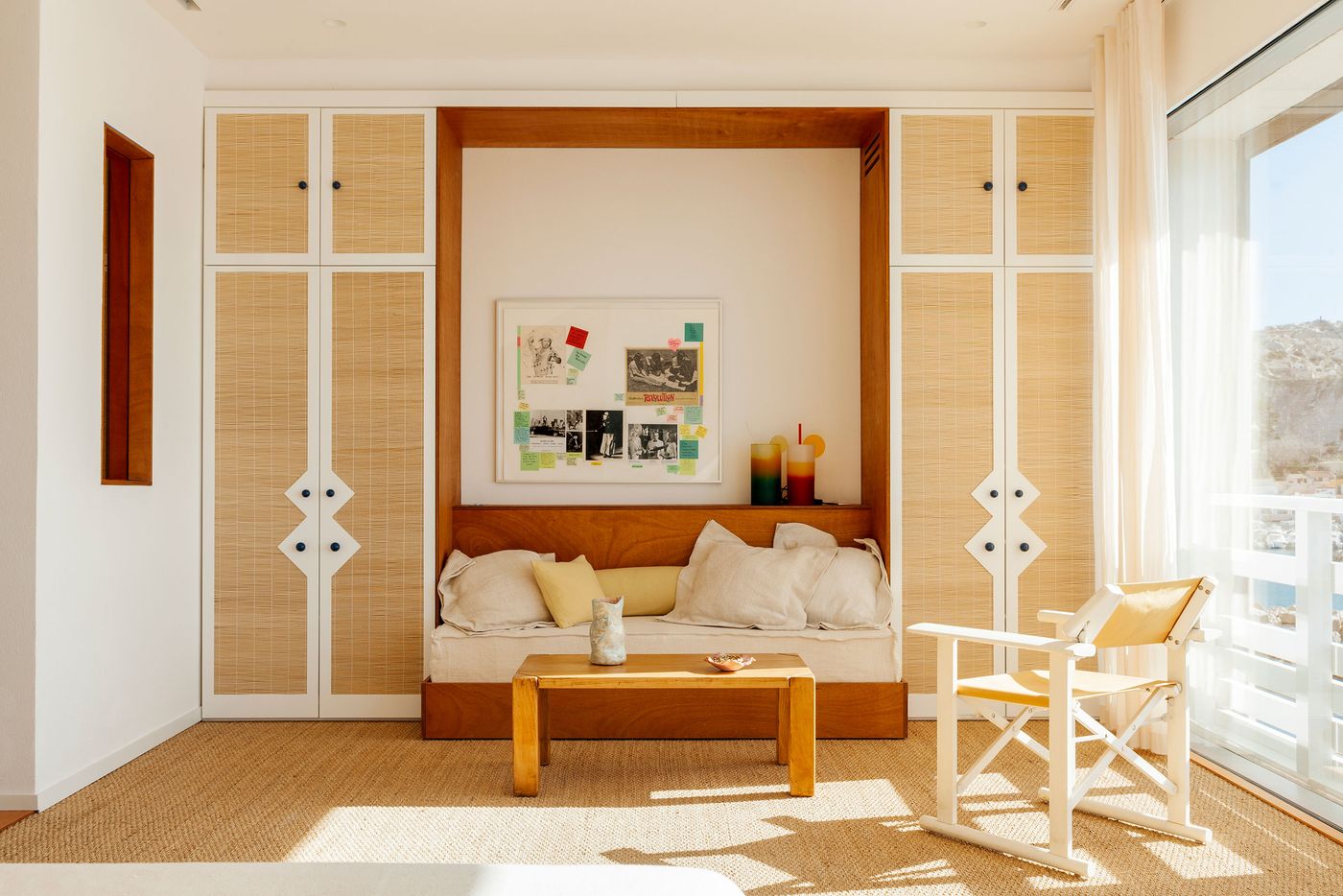
Photography by Edouard Sanville.

Photography by Edouard Sanville.
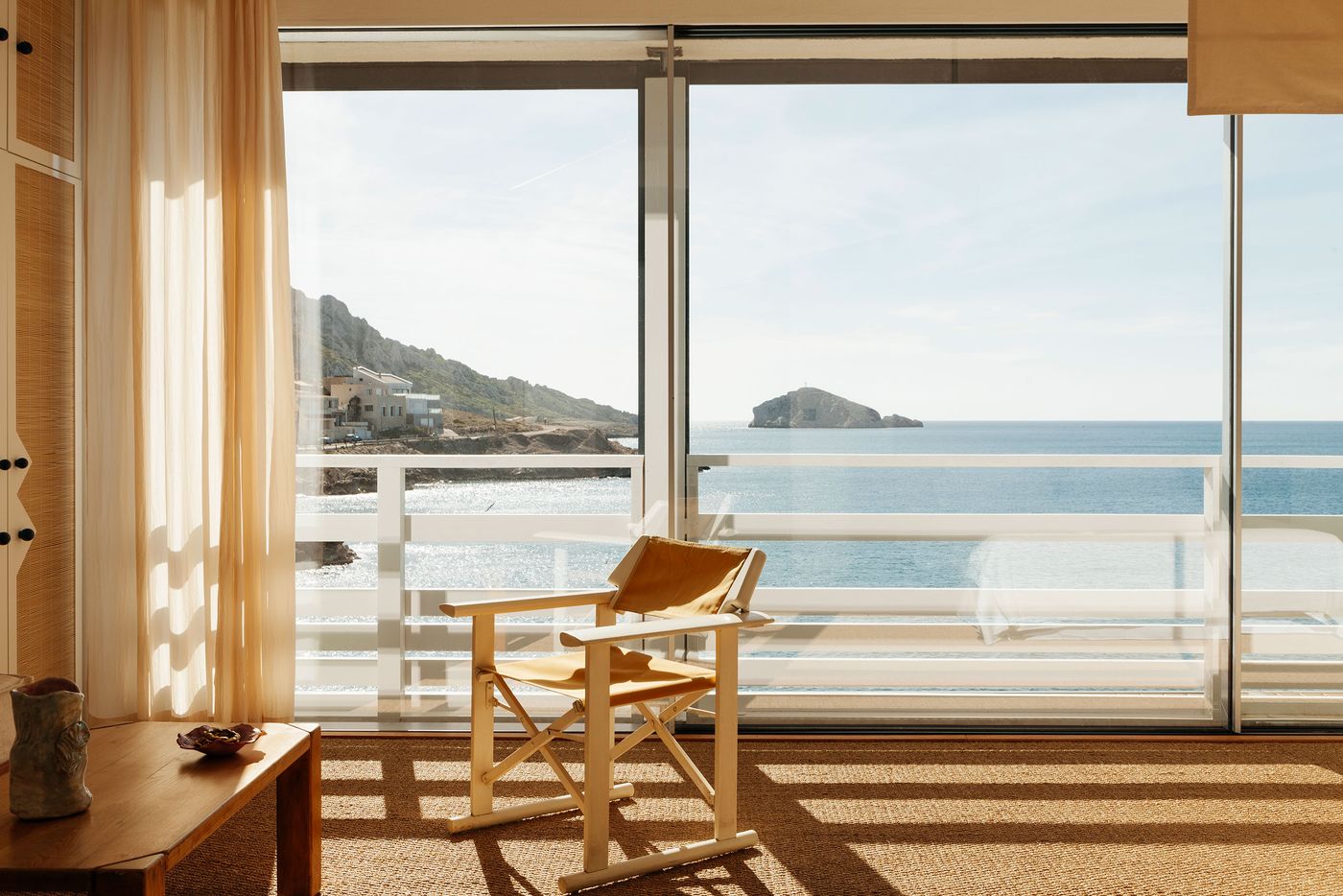
Photography by Edouard Sanville.
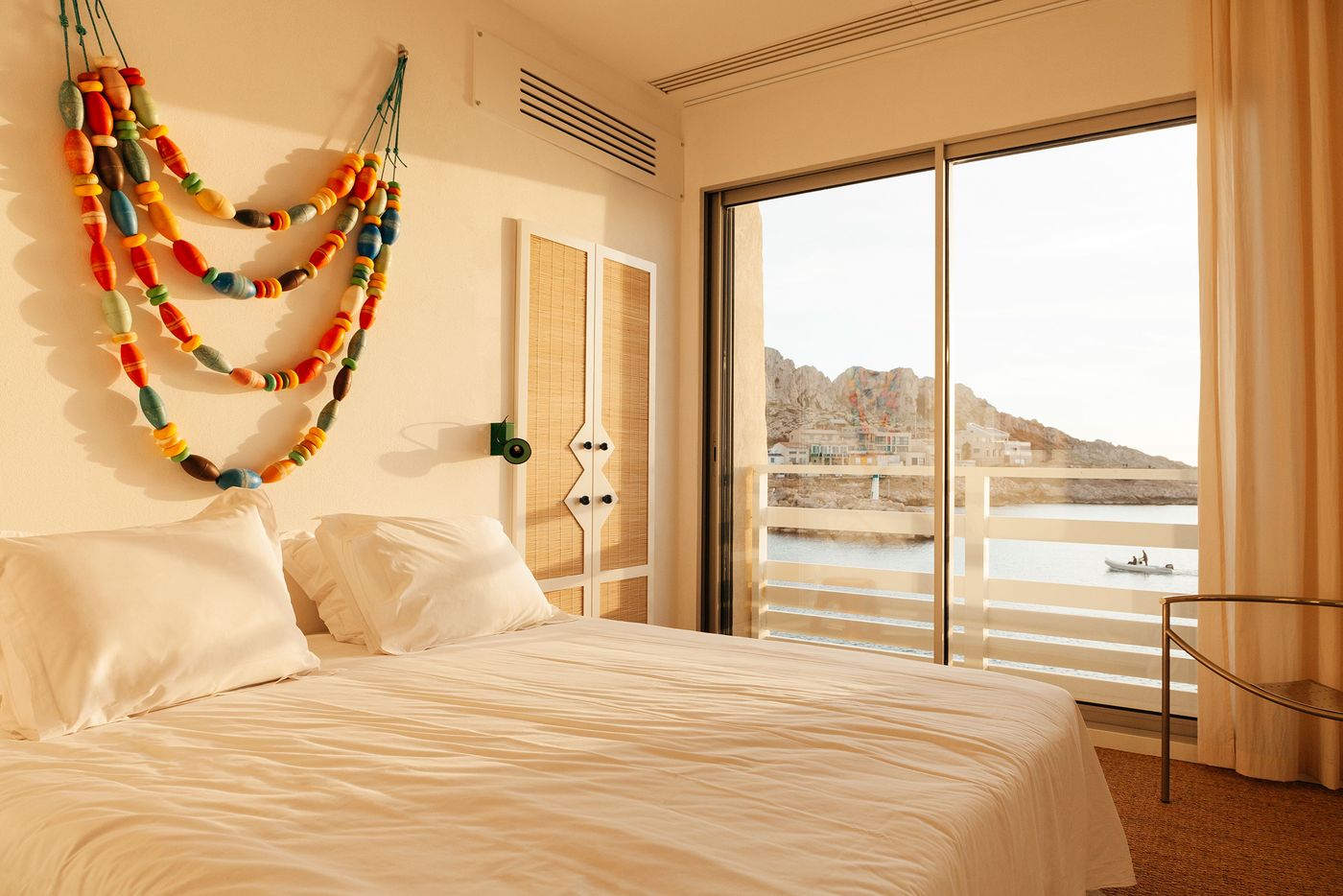
Photography by Edouard Sanville.
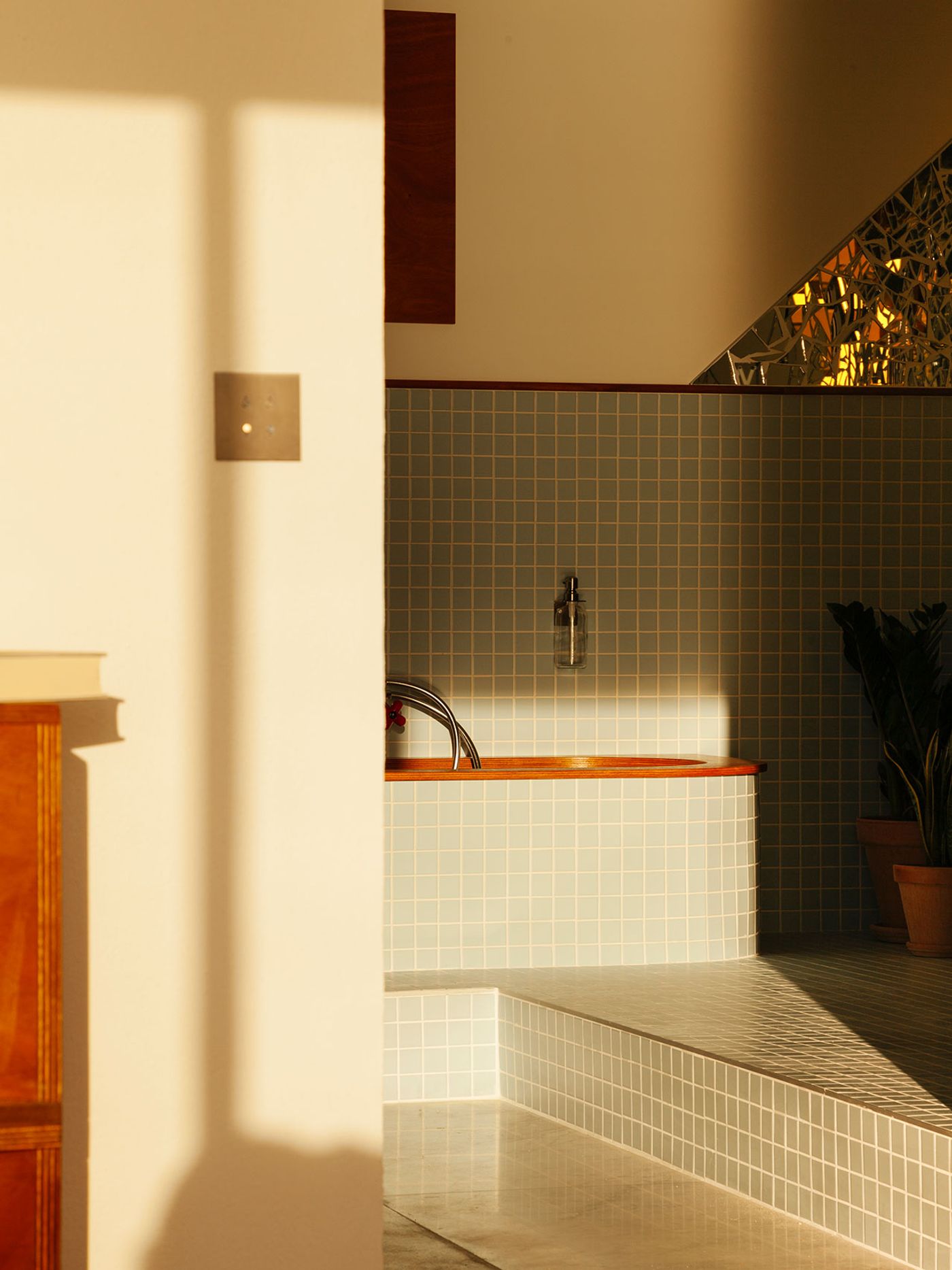
Photography by Edouard Sanville.
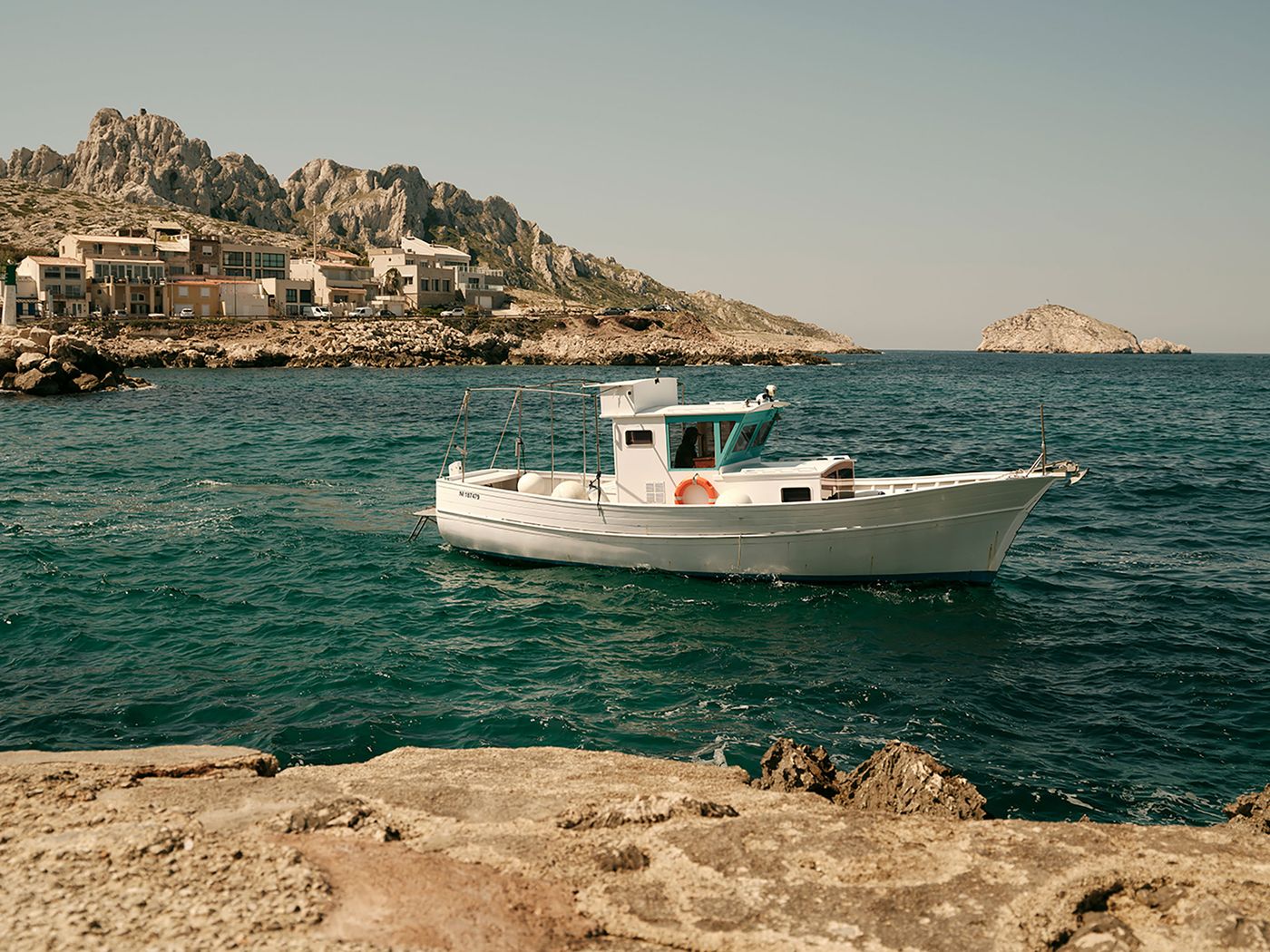
Photography by Florian Touzet.
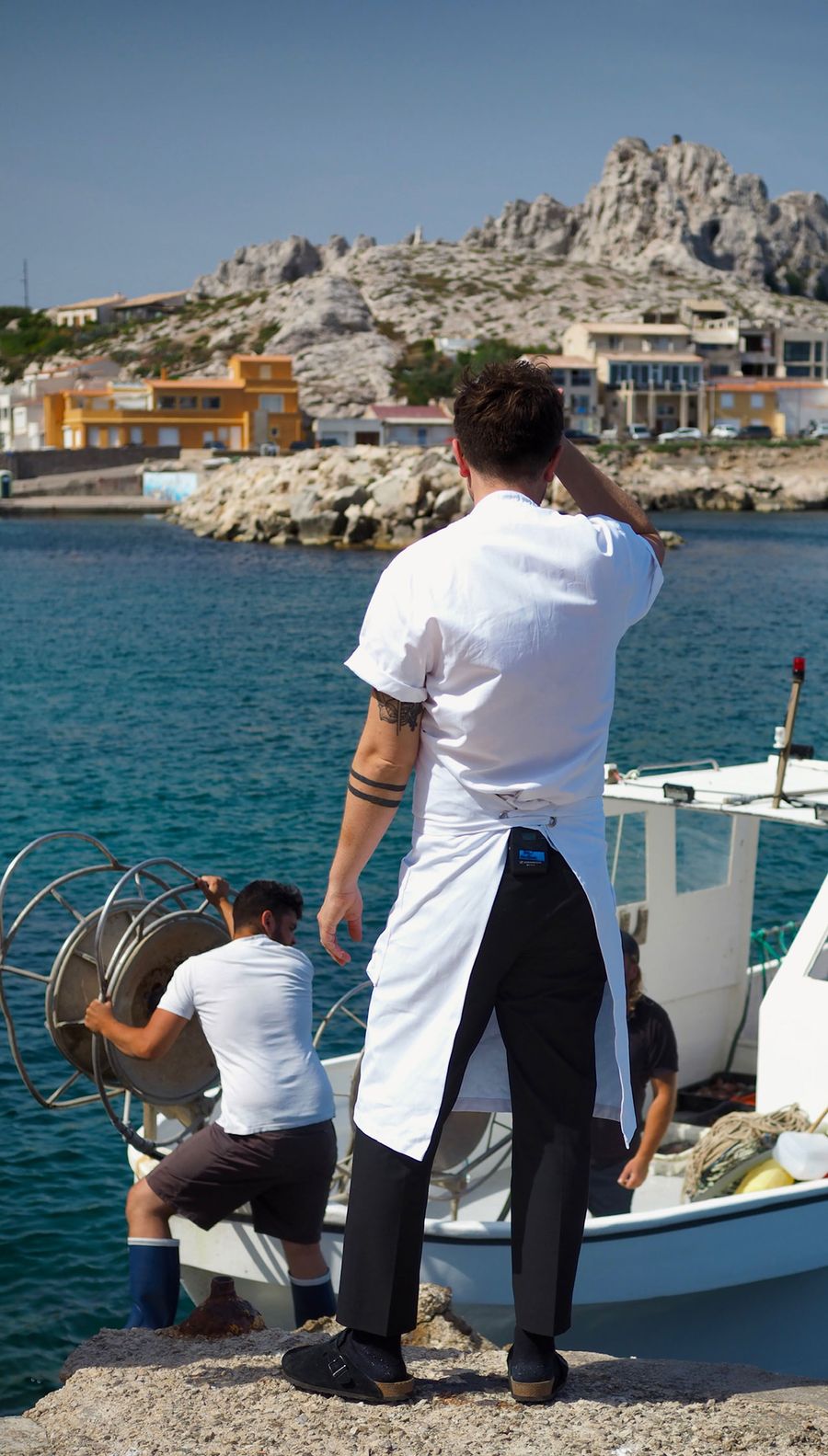
Photography by Delaney Inamine.
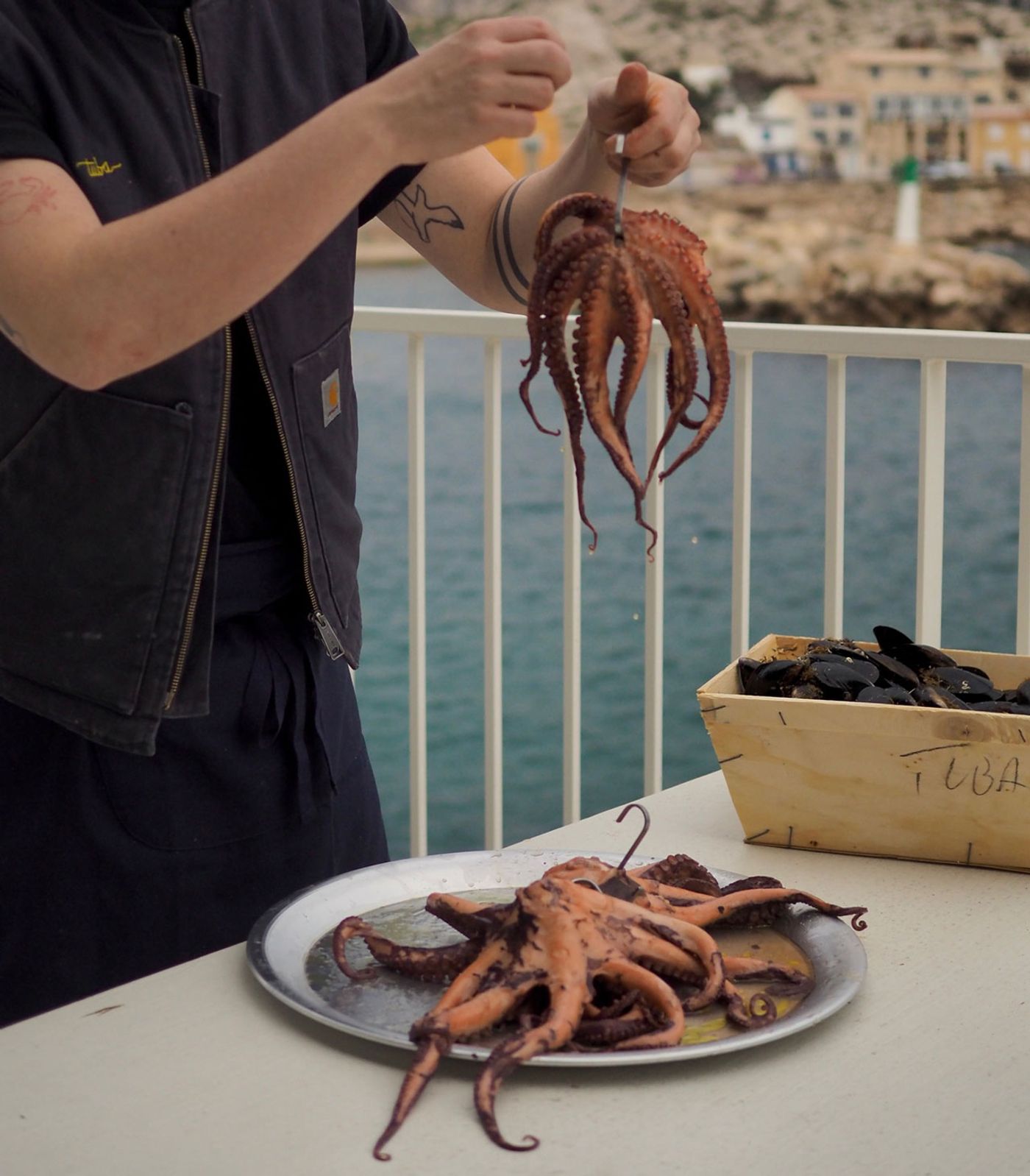
Photography by Delaney Inamine.
From the art on the walls to the art de la table, courtesy of Chef Sylvain Roucayrol whose dishes are as pleasing to the eyes as they are in taste and aroma, Roucayrol has created a seasonal menu attuned to the rhythm of the local fishermen that “captures the desires of the moment, honours the beauty of the products, and always prioritizes taste”. From raw dishes like carpaccio, sashimi and ceviche, to grilled fish and lobster, the Mediterranean Sea is Roucayrol’s undisputed protagonist with herbs and spices from Provence as well as culinary influences from Japan adding a chorus of flavours.
A curated list of mostly natural and biodynamic French and Italian wines rounds up the dining experience while the bar serves Marseille’s famous aperitif, Pastis, in seven variations, plus a range of signature cocktails like the Sormioule, a summer essential made with thyme and rosemary flavoured vodka, ginger beer and lime, and Basil Boli, a mix of gin with Mediterranean tonic, fresh basil and cucumber syrup that pays homage to the Olympique de Marseille football team.
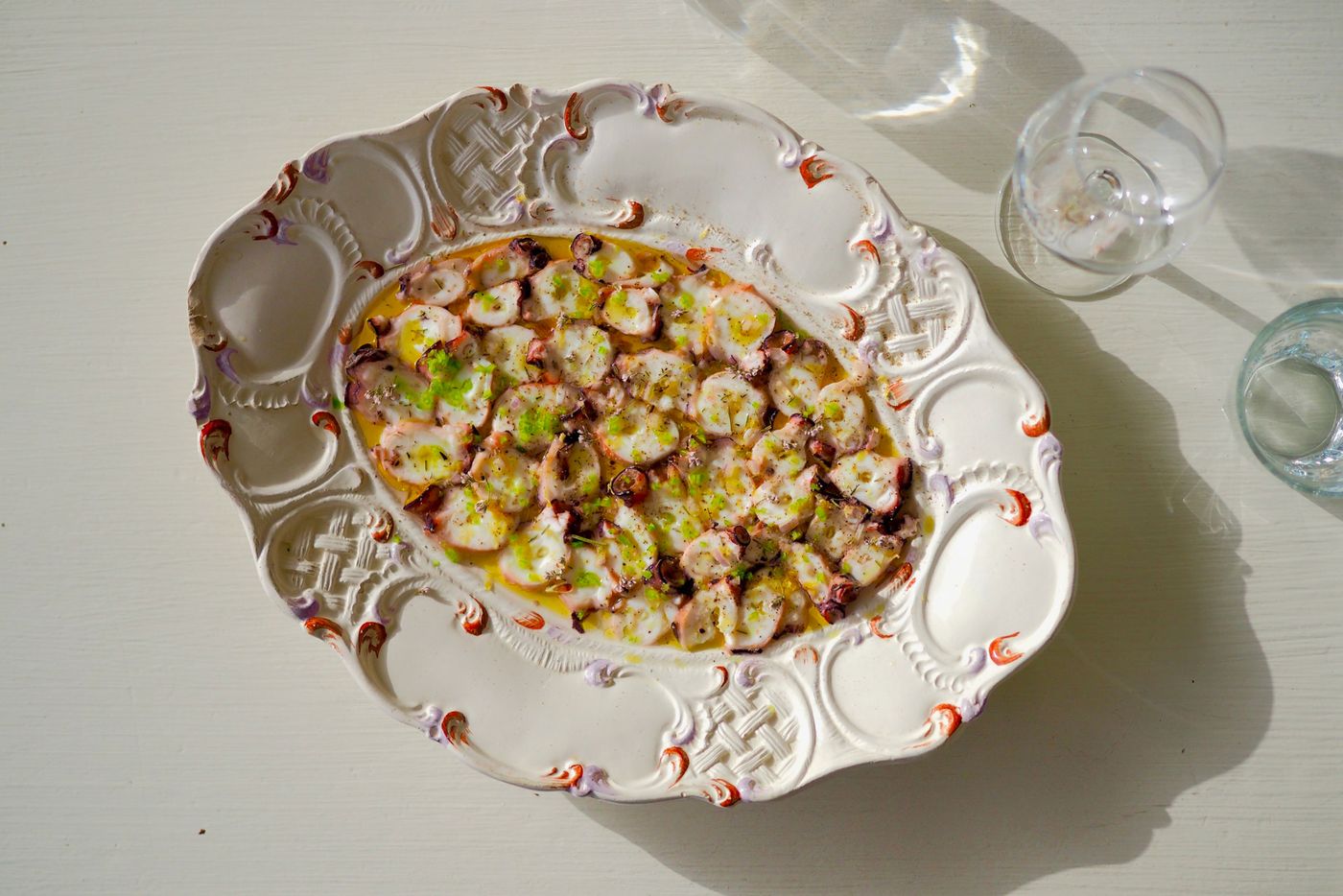
Photography by Delaney Inamine.
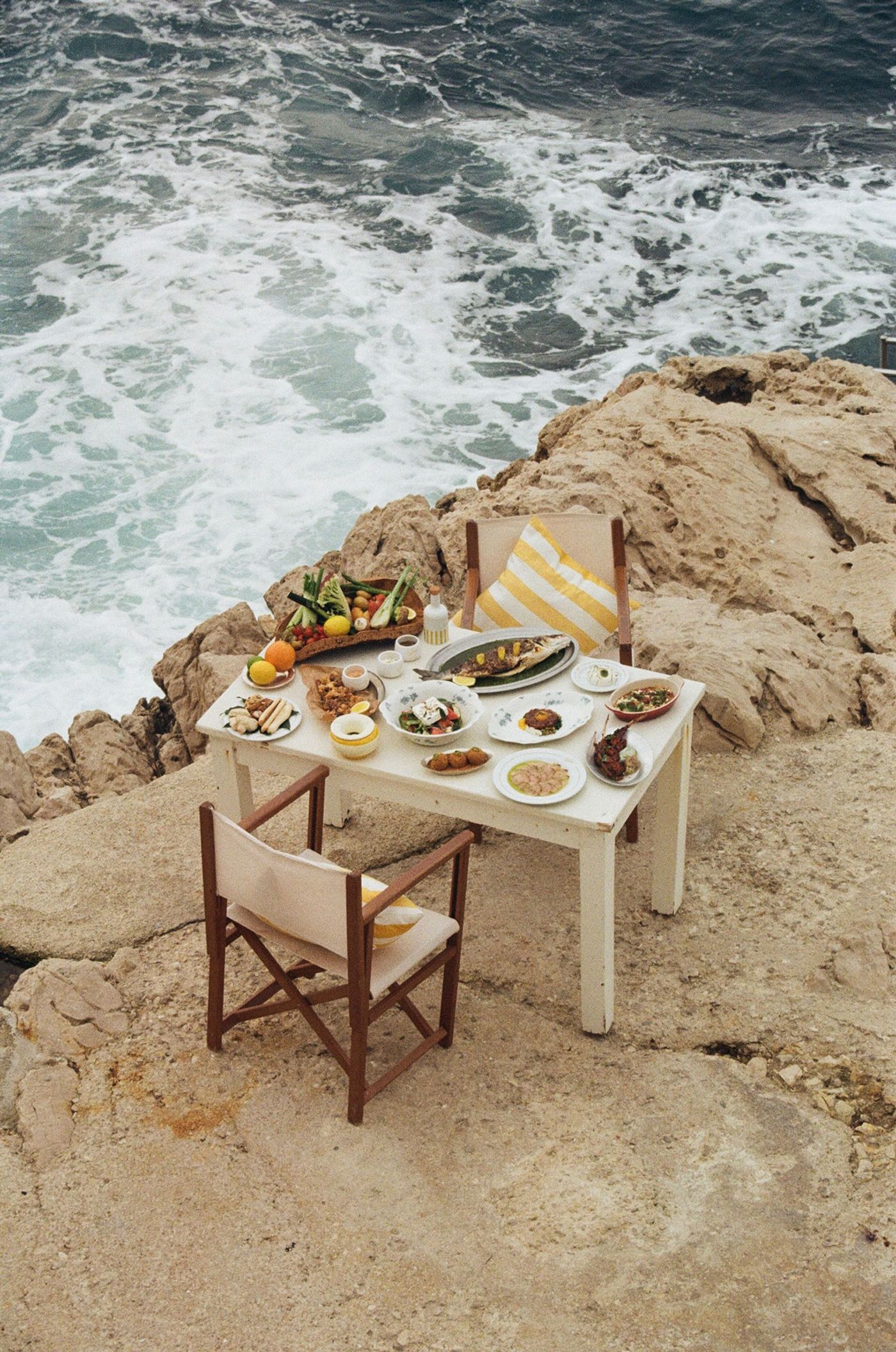
Photography by Delaney Inamine.
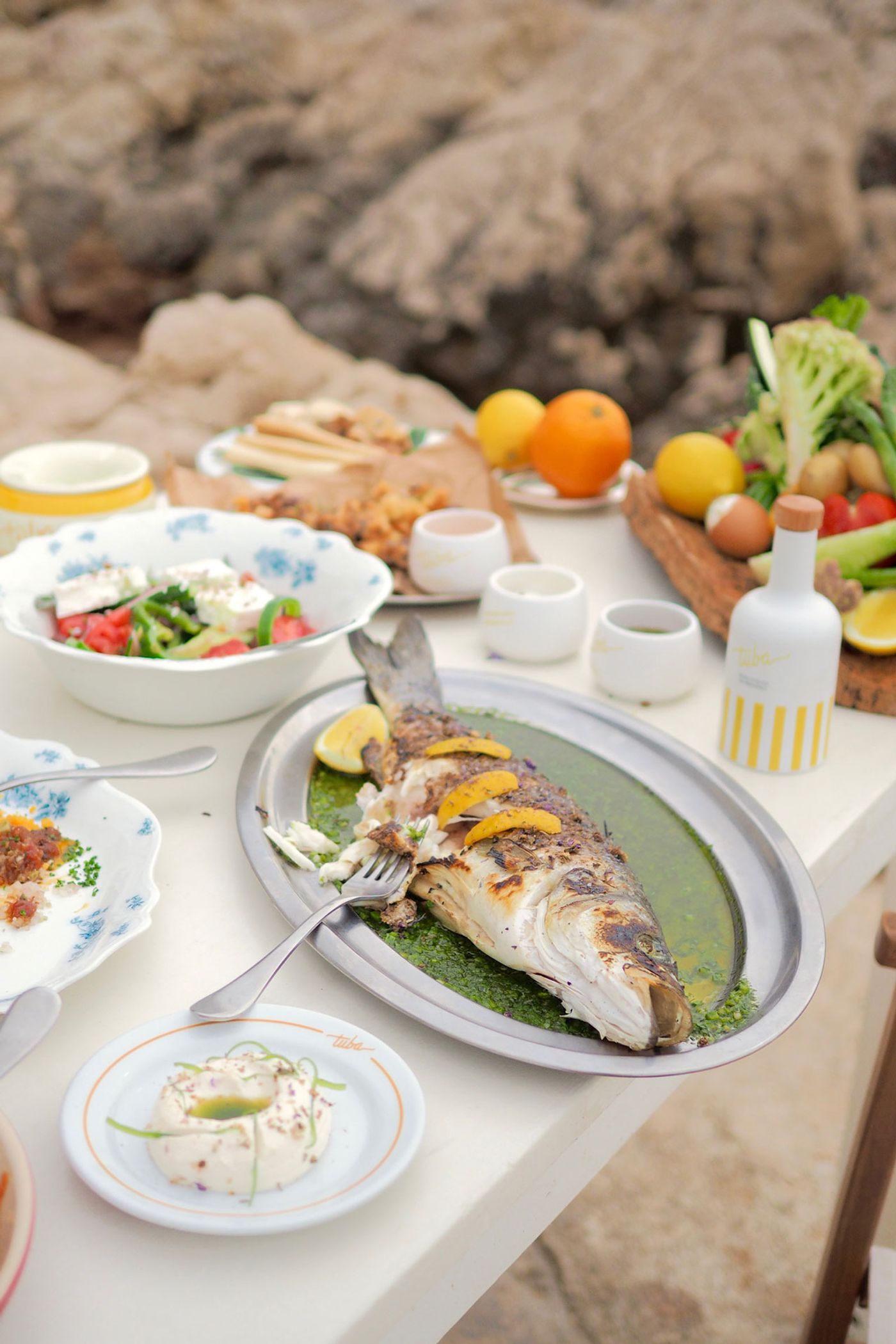
Photography by Delaney Inamine.
Aperitivos and cocktails can also be enjoyed at Le Bikini’s, the hotel’s new roof terrace bar, which Mailaender has playfully furnished with turquoise tables, armchairs recovered from a former beach restaurant, revamped in black and white gingham, and an upcycled boat hull from Marseille made into a bar counter by Ateliers Laissez Passer.
Adventurous guests can take advantage of Tuba’s yellow paddleboards and canoes or embark on a guided hike in the surrounding calanques; for all others there are picnic-baskets, backgammon games, yoga classes and a pétanque court. If you ask us though, the best activity would be to stretch out on the yellow-striped mattresses that dot the hotel’s rocky shoreline and let the big blue unfolding at your feet do its magic.
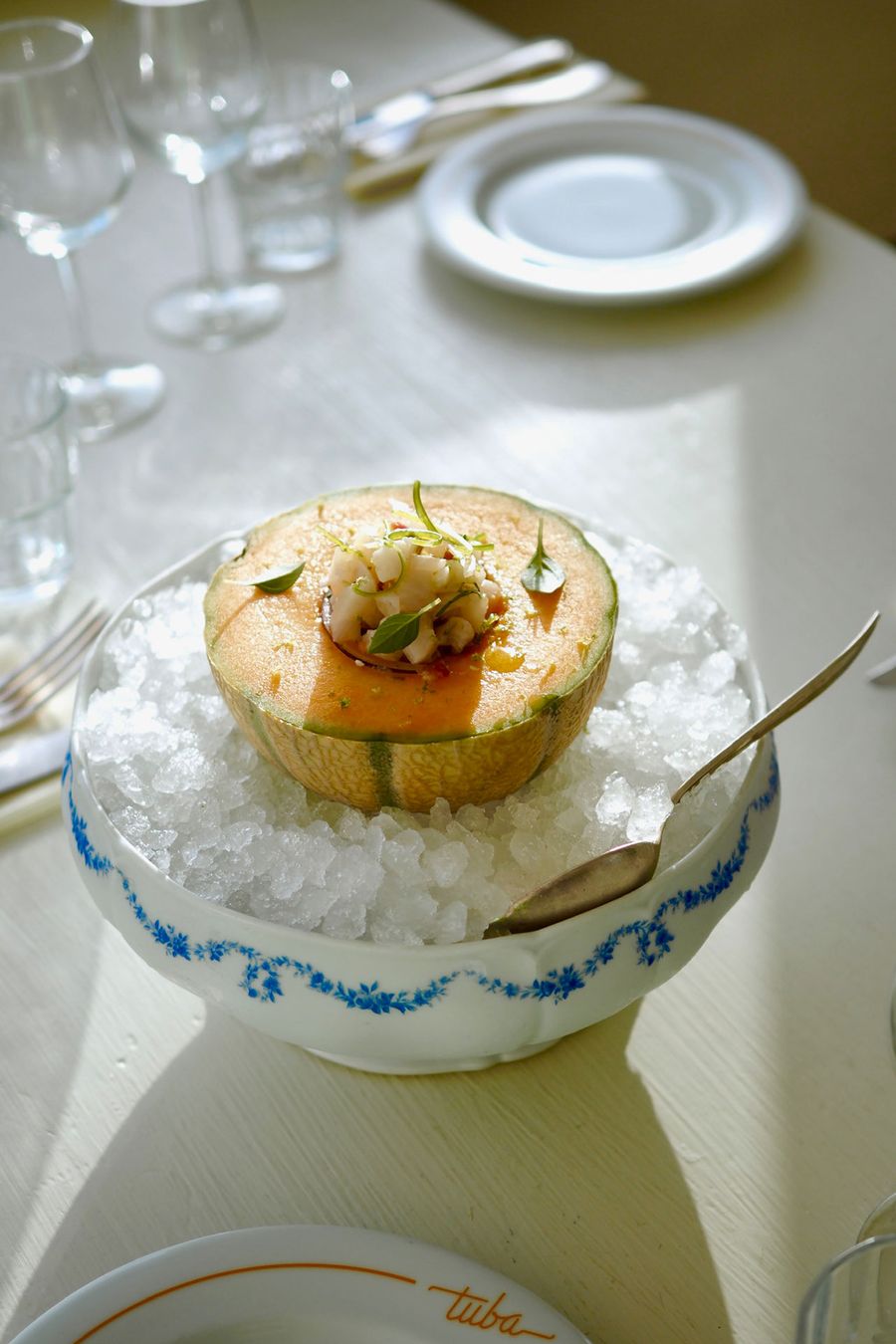
Photography by Delaney Inamine.
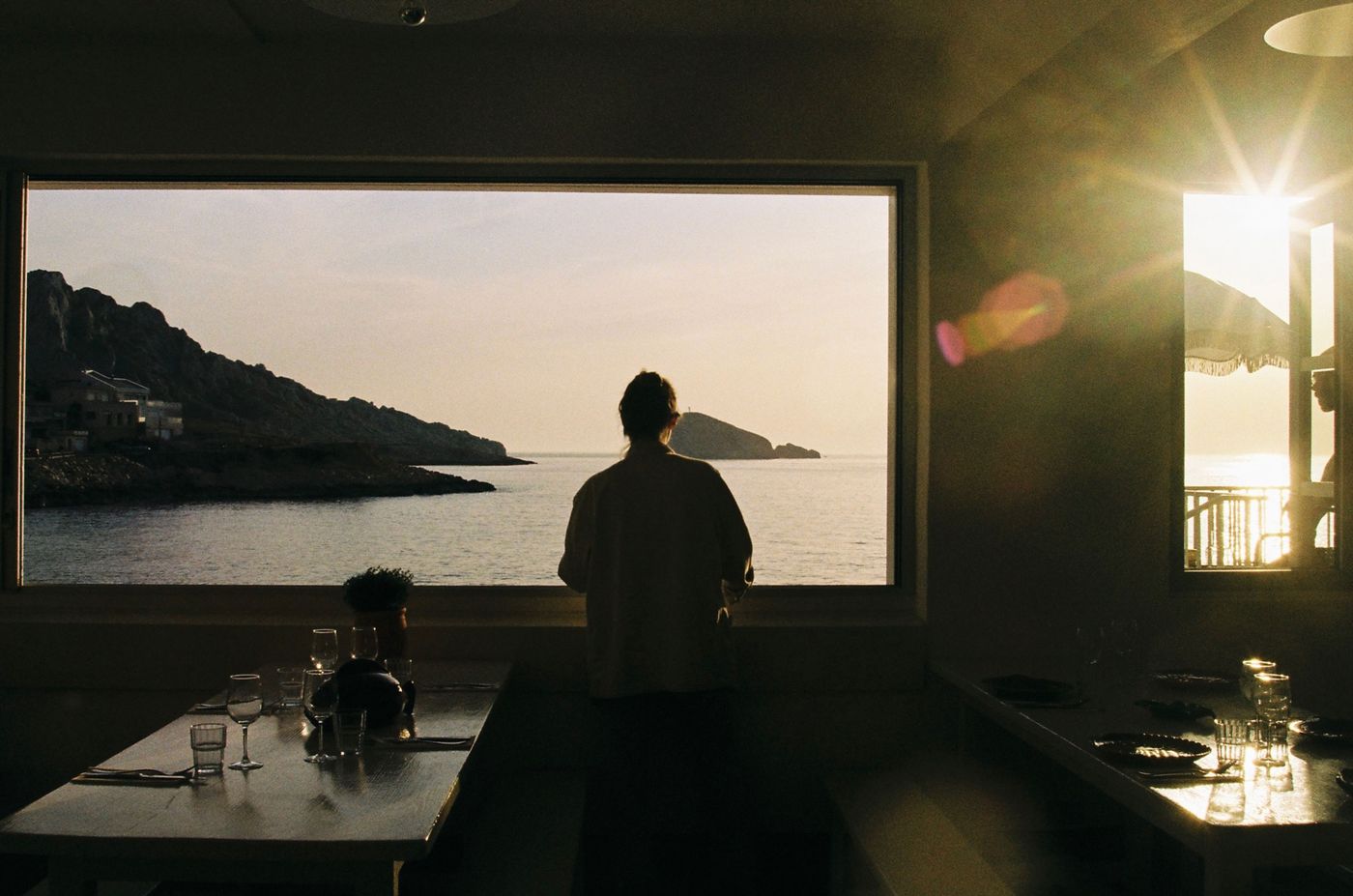
Photography by Delaney Inamine.
Tuba has already established a reputation within France’s creative circles thanks to its cool vibes, laid-back ambience and seducing nostalgia, not to mention its gorgeous sea views of the Mediterranean.
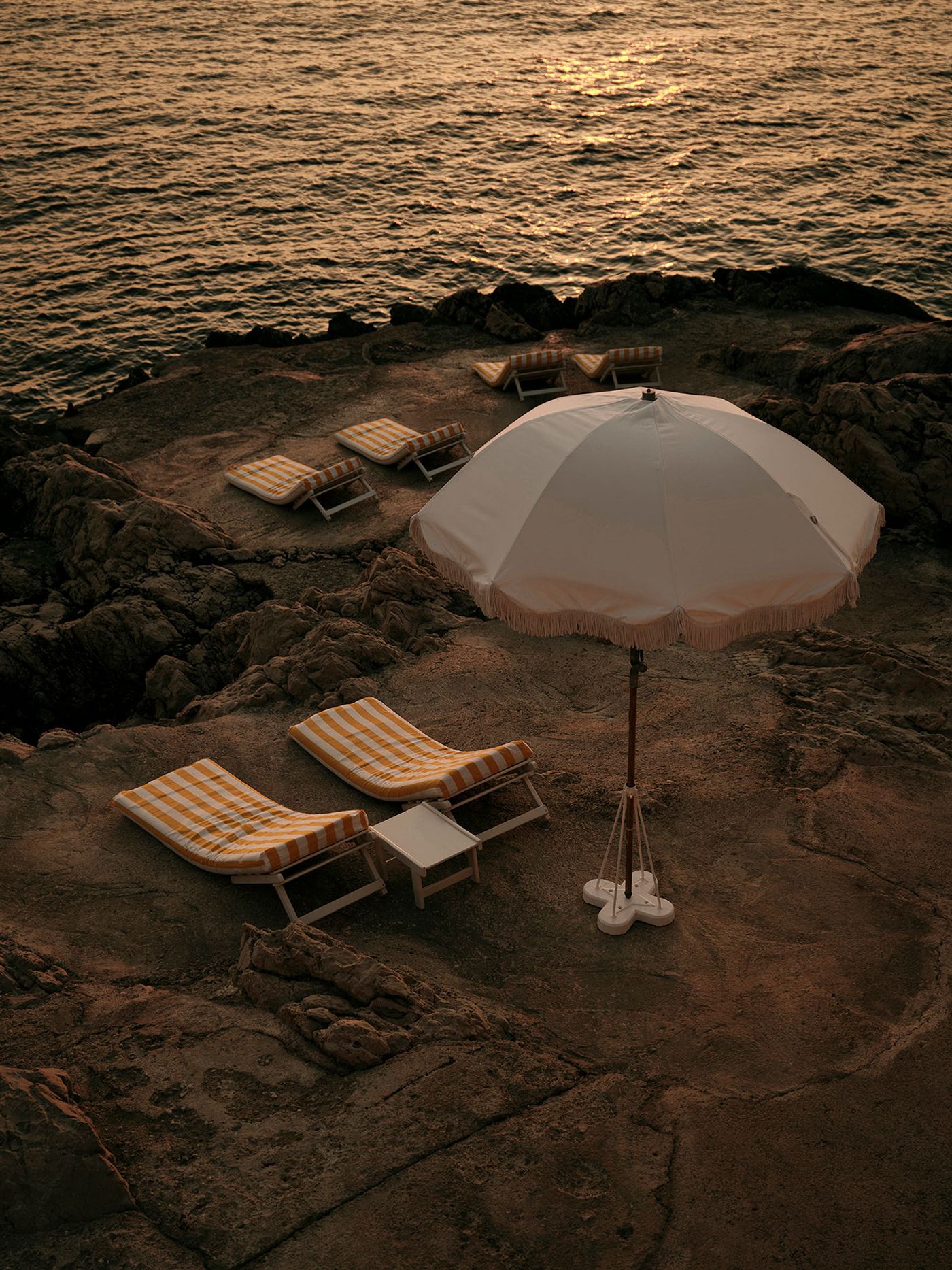
Photography by Florian Touzet.

Photography by Delaney Inamine.
